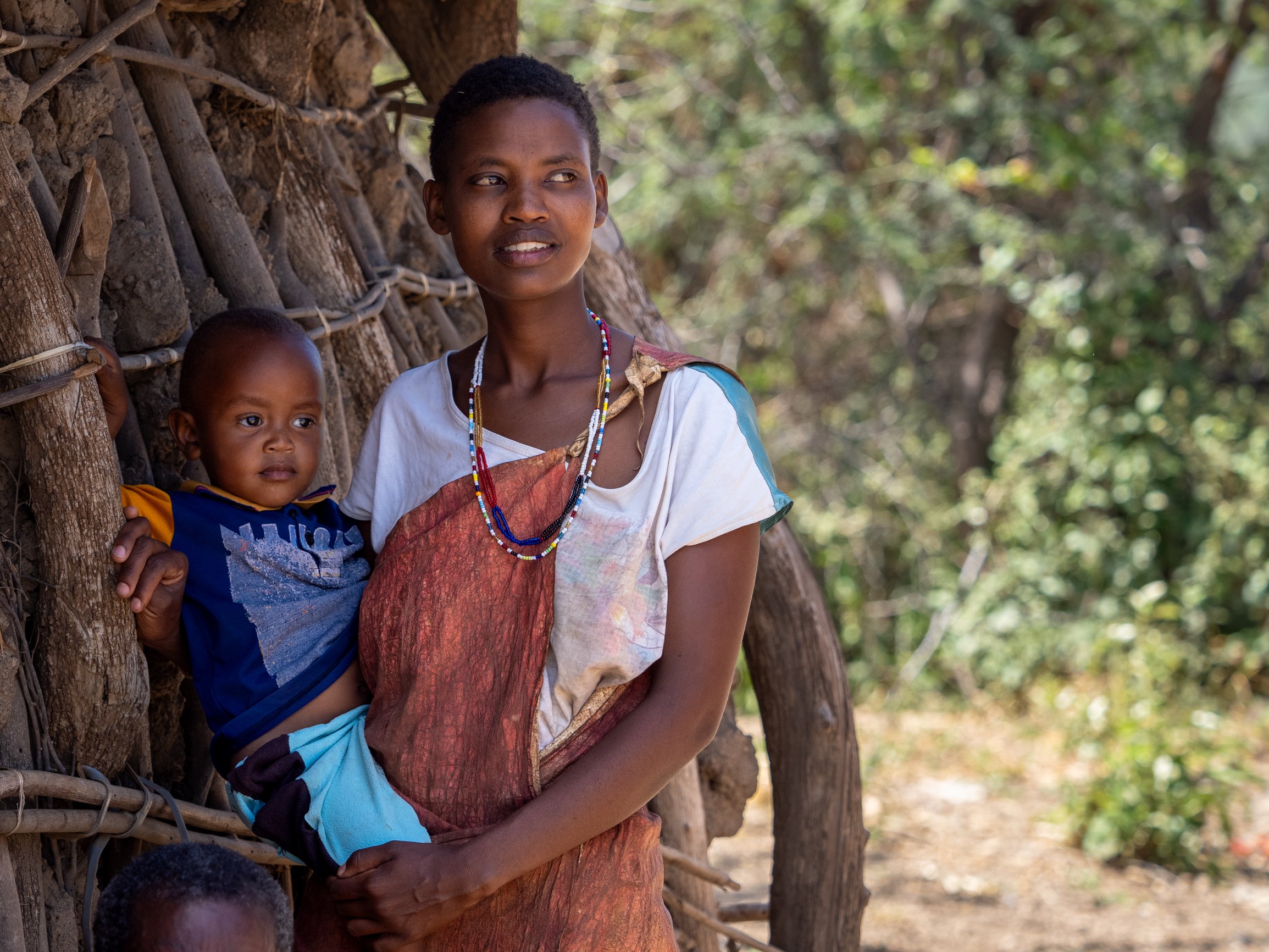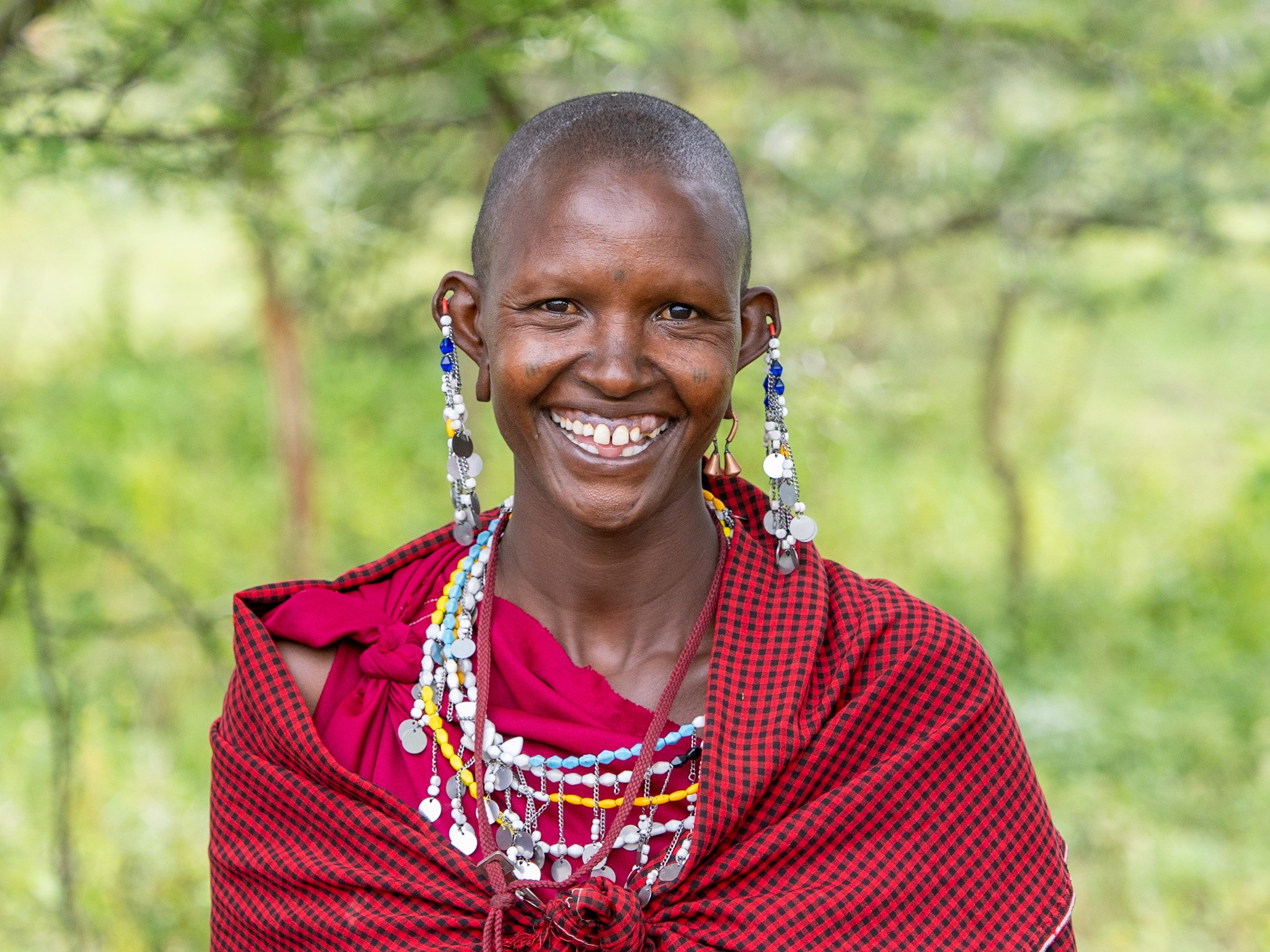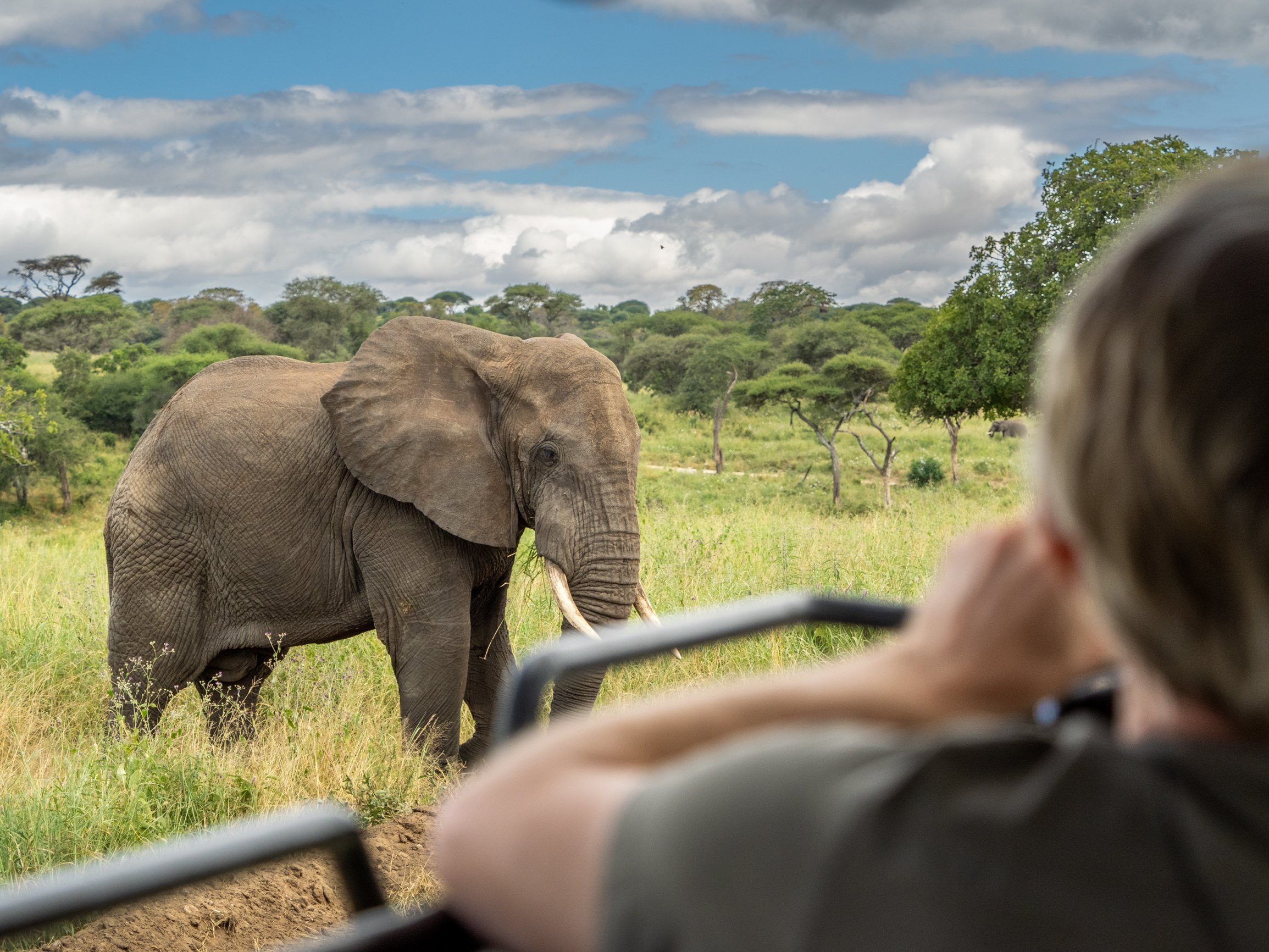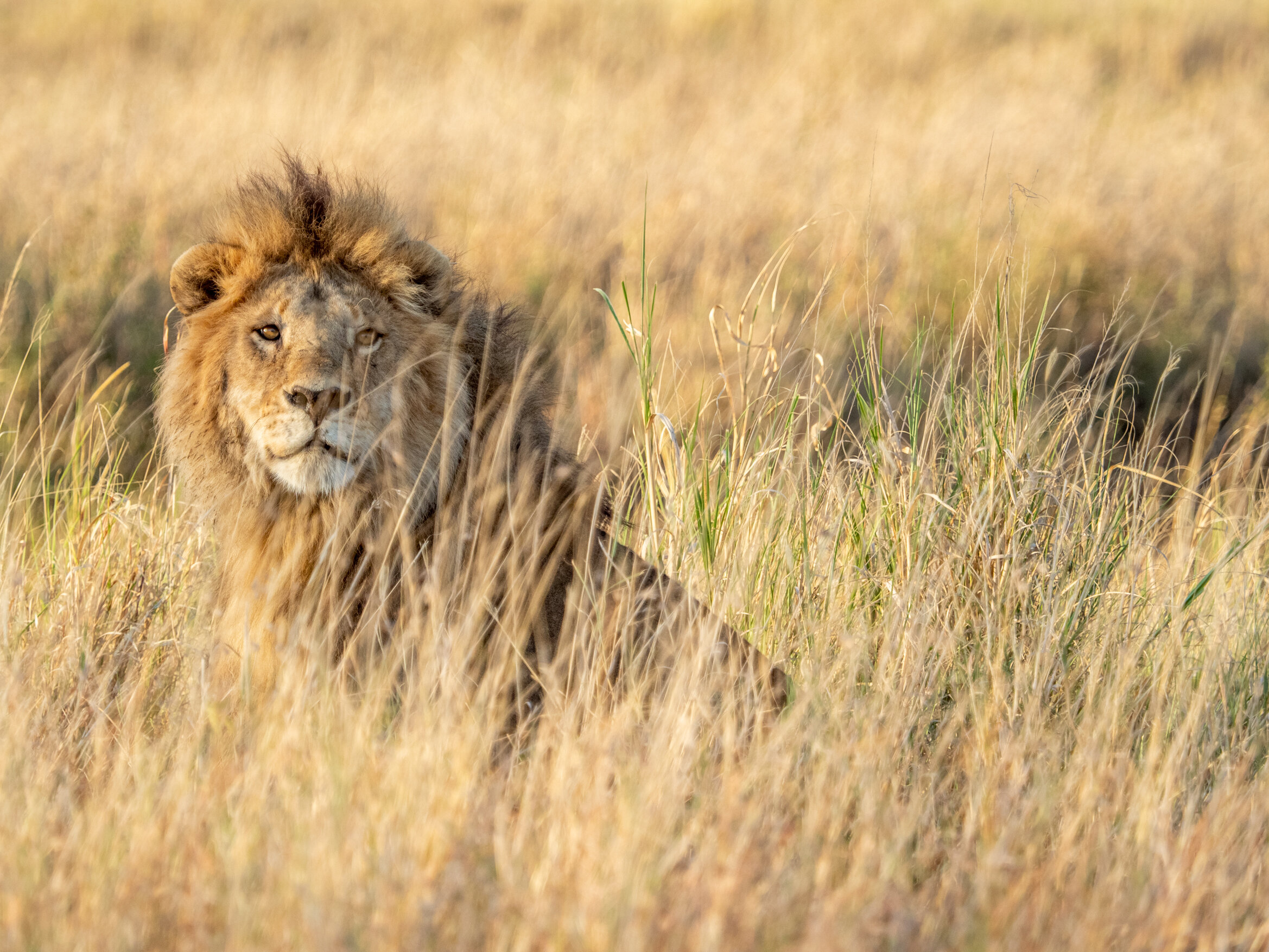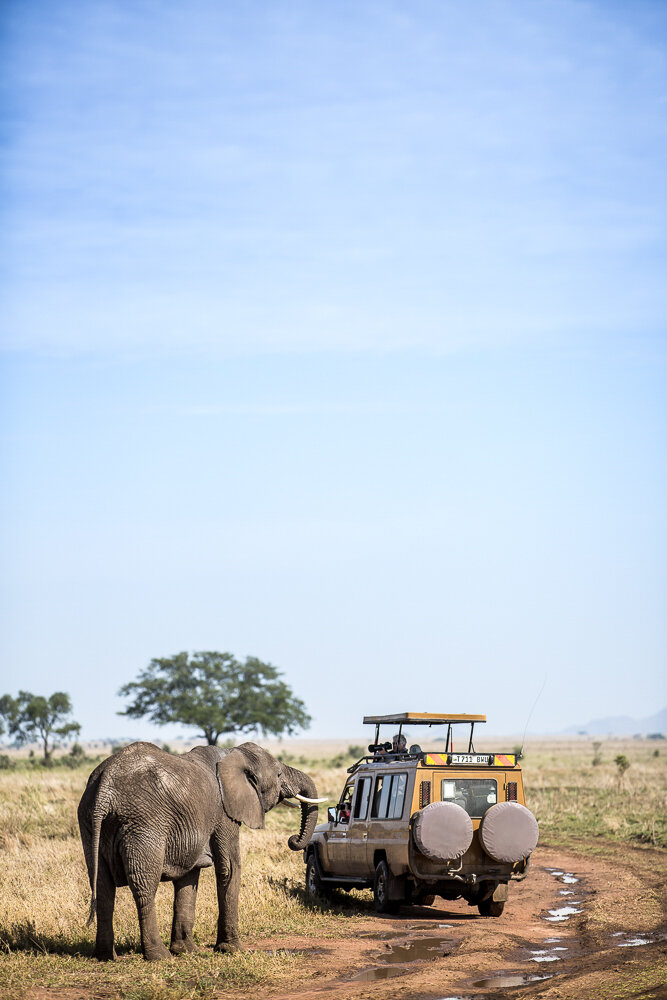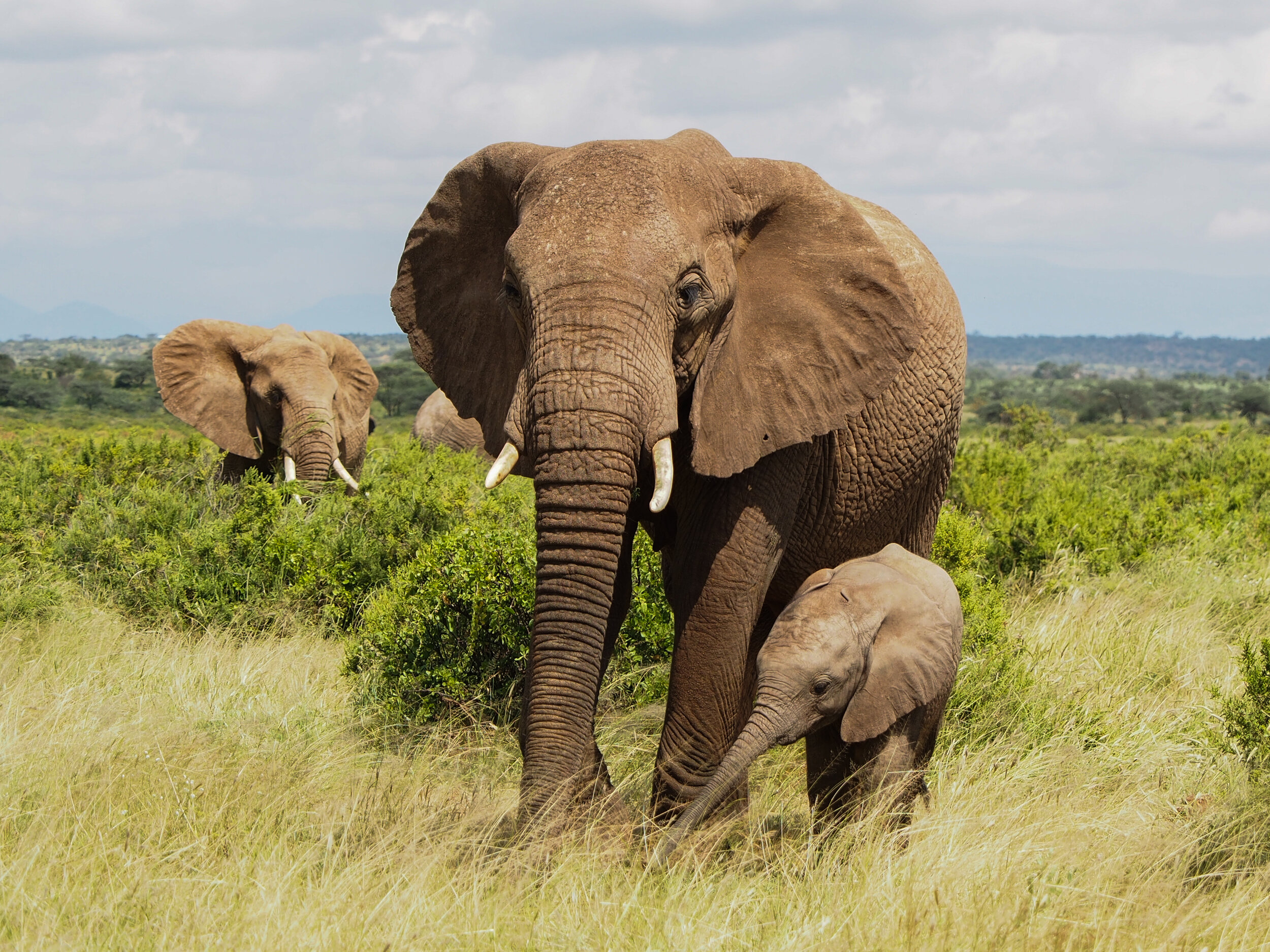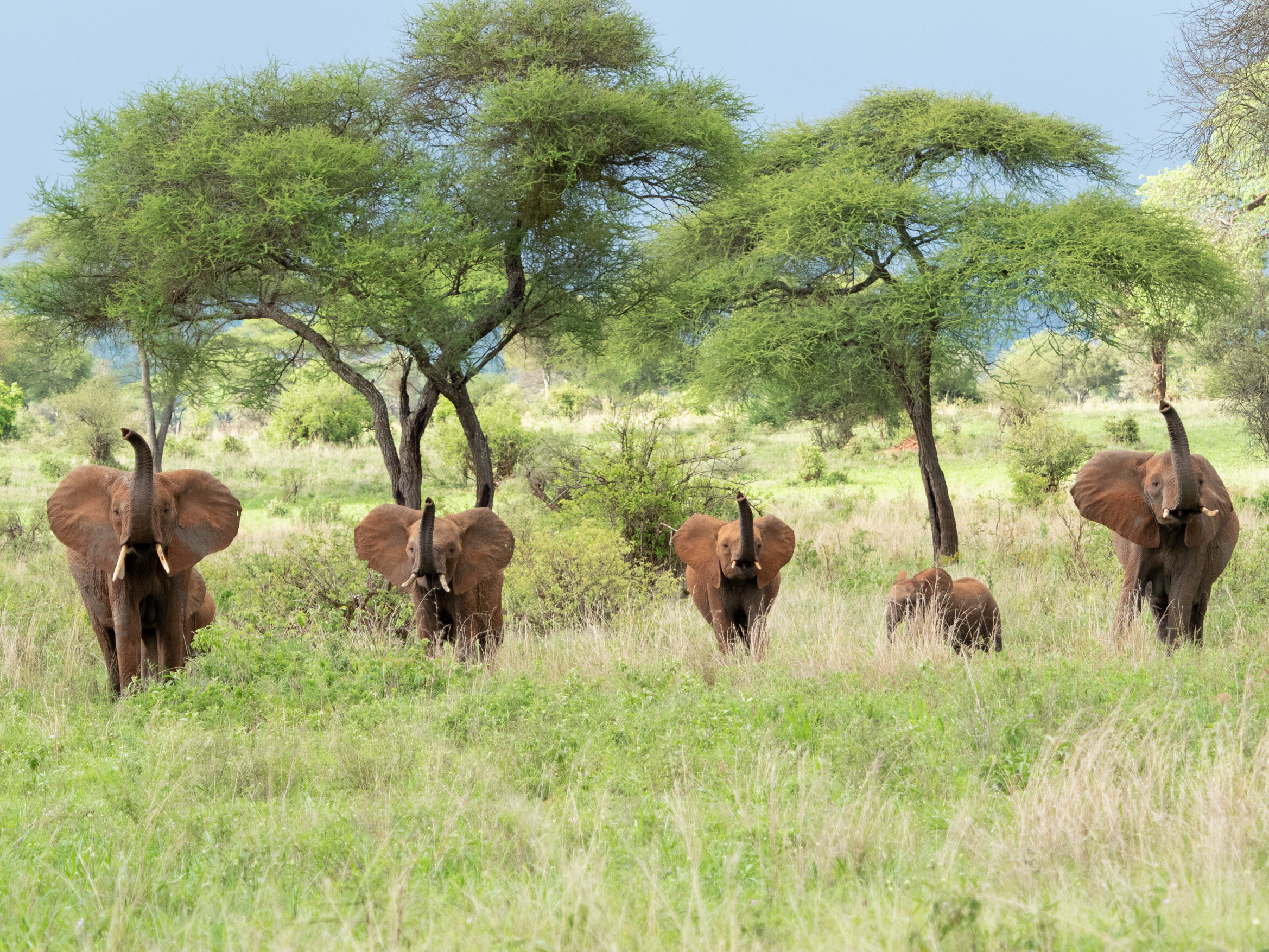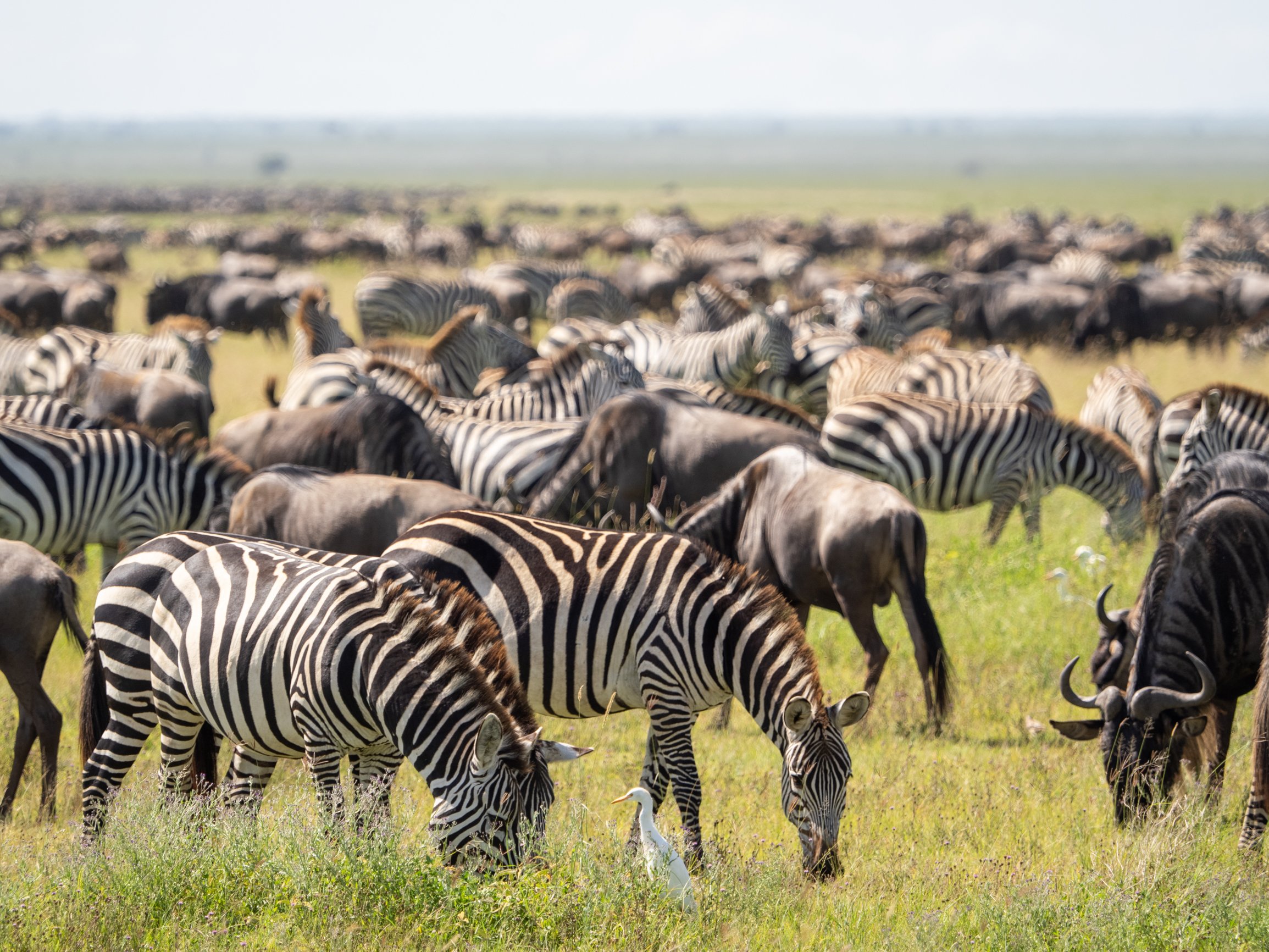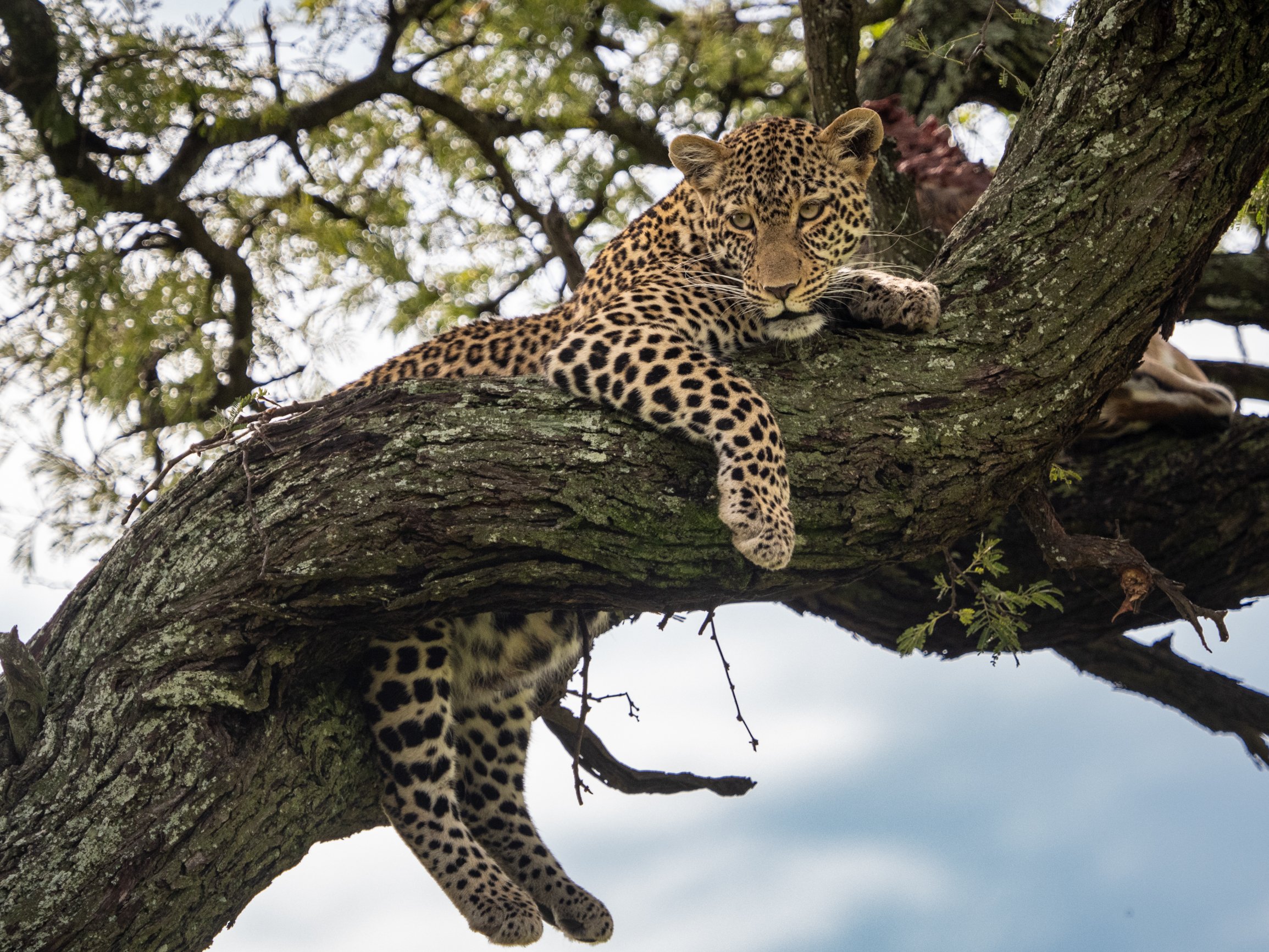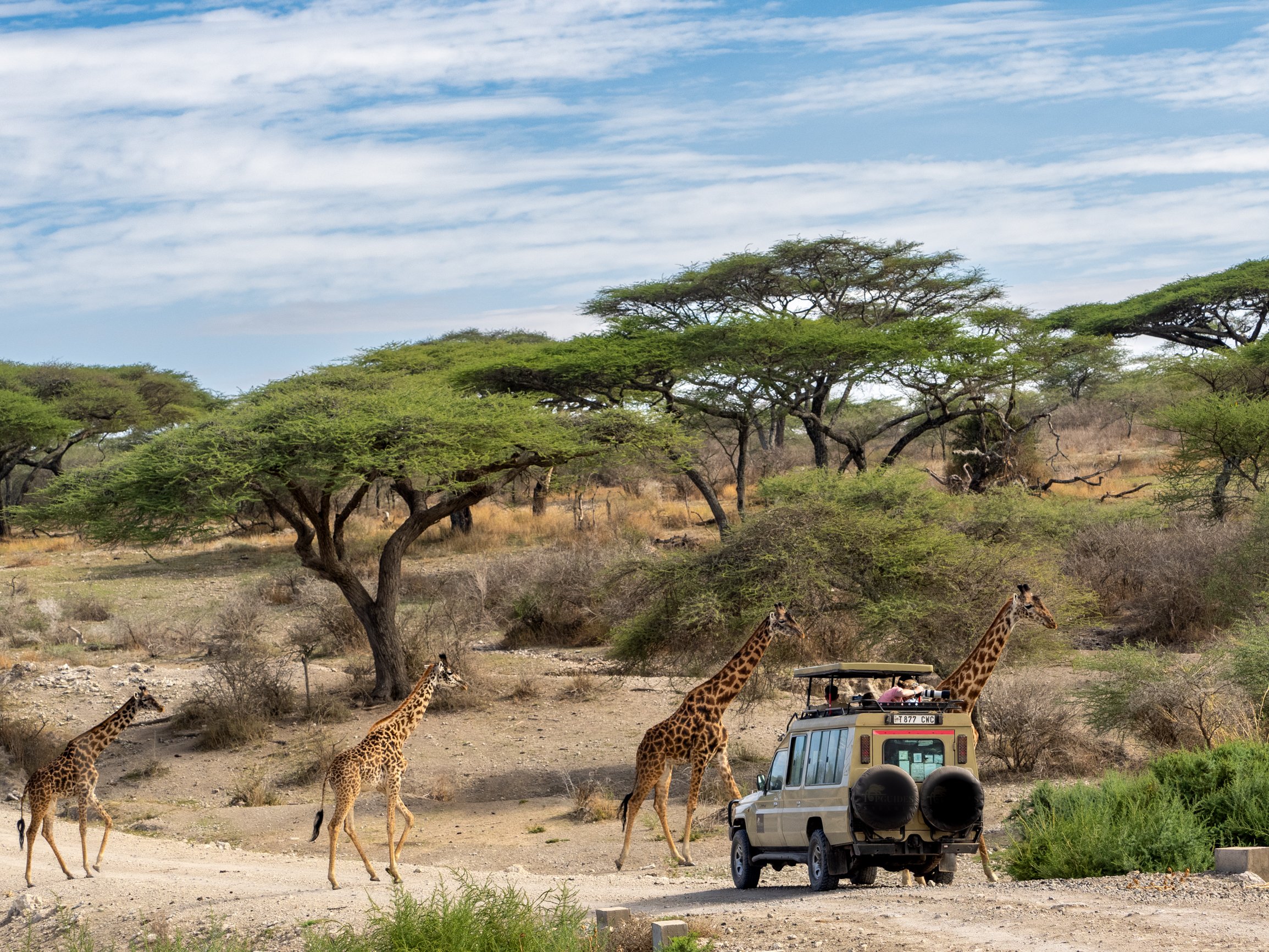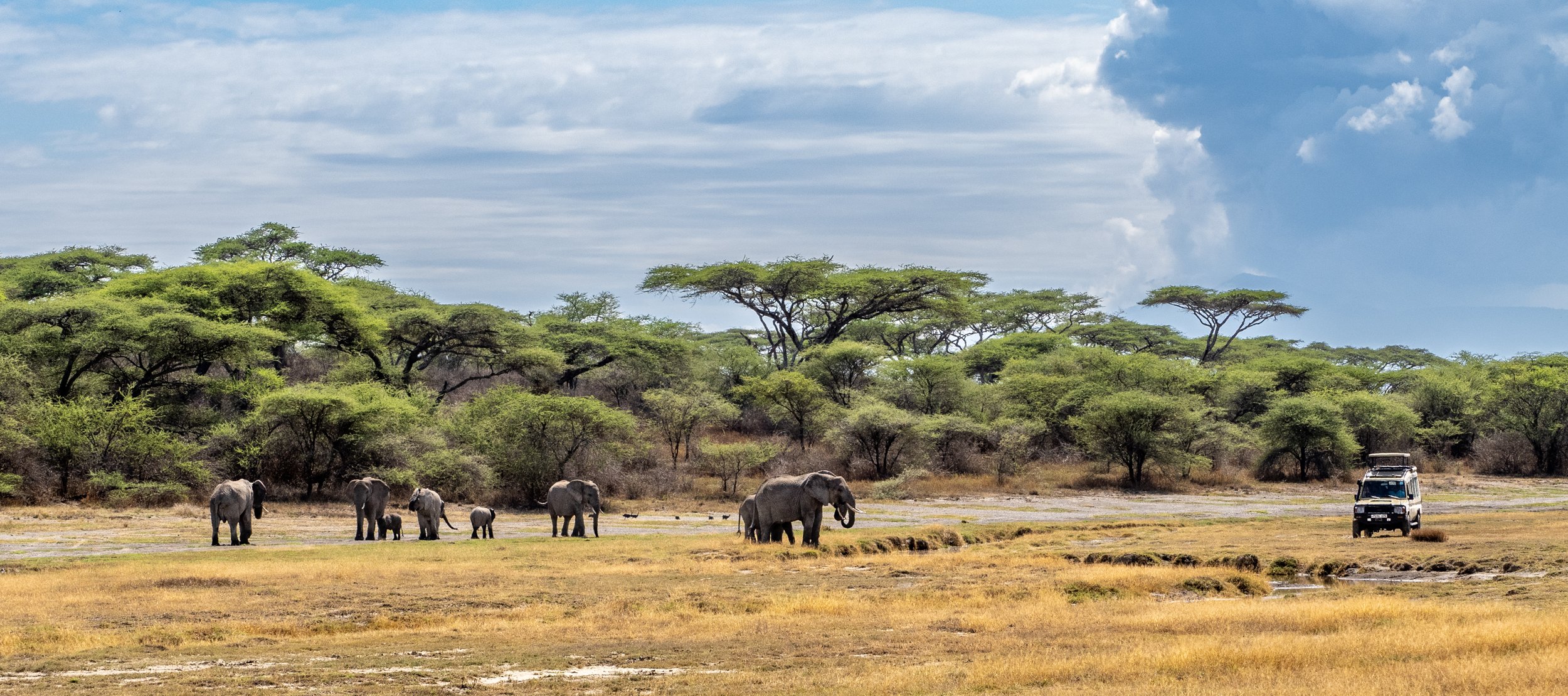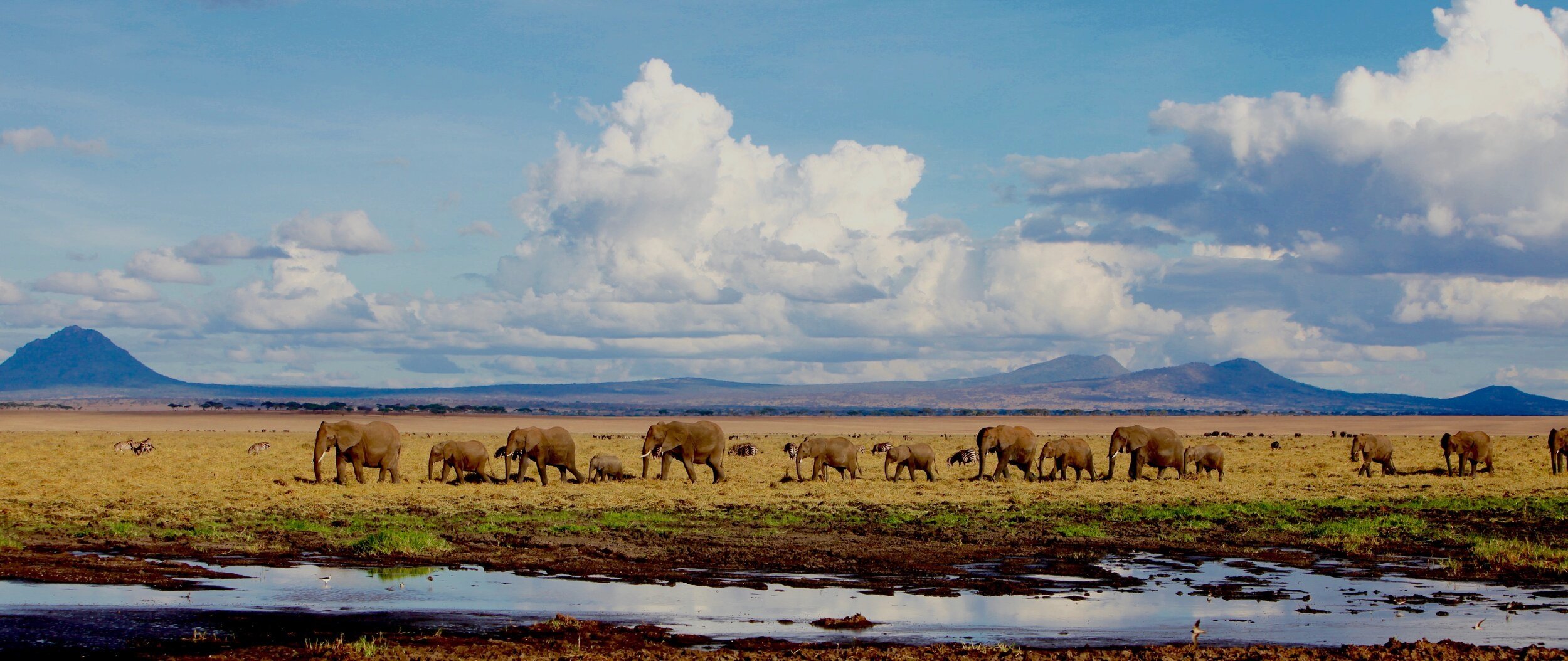
Thanksgiving in Tanzania for families with kids age 8 and over!
Give your kids the gift of adventure before high school schedules take over—Thanksgiving is the perfect time to explore Tanzania together.
Dates: Private trips are best in early March, June and November (over Thanksgiving). November will have the best prices.
If we get enough interest, we can consider a group tour in 2025, 2026 or 2027. Get in touch with us for details.
Here’s a look inside previous tours…
Why we like Tanzania for kids…
-

Unrivaled Wildlife Viewing
With more wildlife and big cats than nearly any other African country, your kids will never be bored nor wish to stay inside on a screen.
You’re likely to see the Big Five: Lions, leopards, elephants, rhinos, and buffalo.
Plus, kids like standing up in the cars without seatbelts!! It’s a 4×4 through the bumpy savannahs every day.
-

Indigenous tribes
Where else can you interact with tribes who still maintain their traditional way of life?
You’ll meet and interact with the Maasai and Datoga people.
And participate in a traditional hunt with the Hadzabe who speak a unique click language and have preserved their traditions over centuries.
-

Incredible Landscapes
From the endless plains of the Serengeti… to the lush volcanic crater… to swampy red mud of Tarangire.
Each drive feels like you’re entering a different world. Sometimes you feel like you’re driving through a painting!
-

Luxury and Comfort
Tanzania offers more luxury for cheaper prices than any other country.
This allows us to provide you with incredible and tailored experiences — from private guides to exclusive lodges and cultural activities — that you can’t find anywhere else.
-

Proximity to Zanzibar
In Tanzania, you can combine your safari with a beach escape.
Zanzibar offers pristine beaches, rich history, and opportunities for snorkeling and diving.
The months we love most…
-

Feb/March
This time frame often aligns with kids’ Spring Break.
It’s considered high season in Tanzania because of “the great migration” of animals.
Instead of dozens, hundreds or even thousands of animals seen in other months, more than 1 million animals will migrate into Tanzania during these months.
It’s one of the greatest animal spectacles in the world.
The grass is green, the sky is blue and the drives are magic.
Rain is a possibility (that’s why the grasses are green). This makes things dirtier (and potentially more fun) and the post-rain clarity creates stunning atmospheric effects - like you’re driving through a painting.
-

June/July/August
This time frame often aligns with Summer Break.
It’s considered peak season because the weather is dry, the grasses are short and animals are easier to spot — they’re often gathered around central watering holes.
These months are most known for action. In August, you can watch the wildebeest cross the river in the north. In June/July, we can strategically place you near watering holes where crazy things are known to happen.
Everything is alive and fighting for resources — food, water, shelter.
Bugs are less, too — another selling point. And June through October offer the best sunsets.
-

November
Thanksgiving is one of our favorite and easiest times to take kids out of school.
It’s shoulder season in Tanzania and we love it because there are no crowds. Kids can just be kids.
It’s also where you’ll find the best prices and luxury at affordable levels. Best airfare deals, too.
The camps we choose are well located so there’s still a ton of wildlife (way more than you’d see in most other countries).
Rain is a possibility. Green grass is starting to return. There are fewer bugs. It’s magic!
It’s also calving season. Kids love watching baby elephants trip over their trunks and baby lions, leopards and cheetah finally come out of hiding.
Group family trips are GREAT!
One of the things we like most about putting together group trips in Tanzania is having other kids along. It gives your kids a chance to bond, laugh, and enjoy experiences that only other kids fully appreciate.
It also gives YOU some valuable downtime.
The energy, shared moments, and inside jokes create a unique and vibrant atmosphere that makes the experience ten times better for everyone.
Get in touch with us if you’re interested in a group trip, otherwise we can offer you a private tour.
Secure your spot for a 2027 trip with an early deposit here.
Or, if you'd rather not wait till 2027, let us create a private, custom itinerary just for you and your family—on your own schedule.
If we get enough interest, we can consider a 2025 or 2026 group tour. Get in touch with us for details.
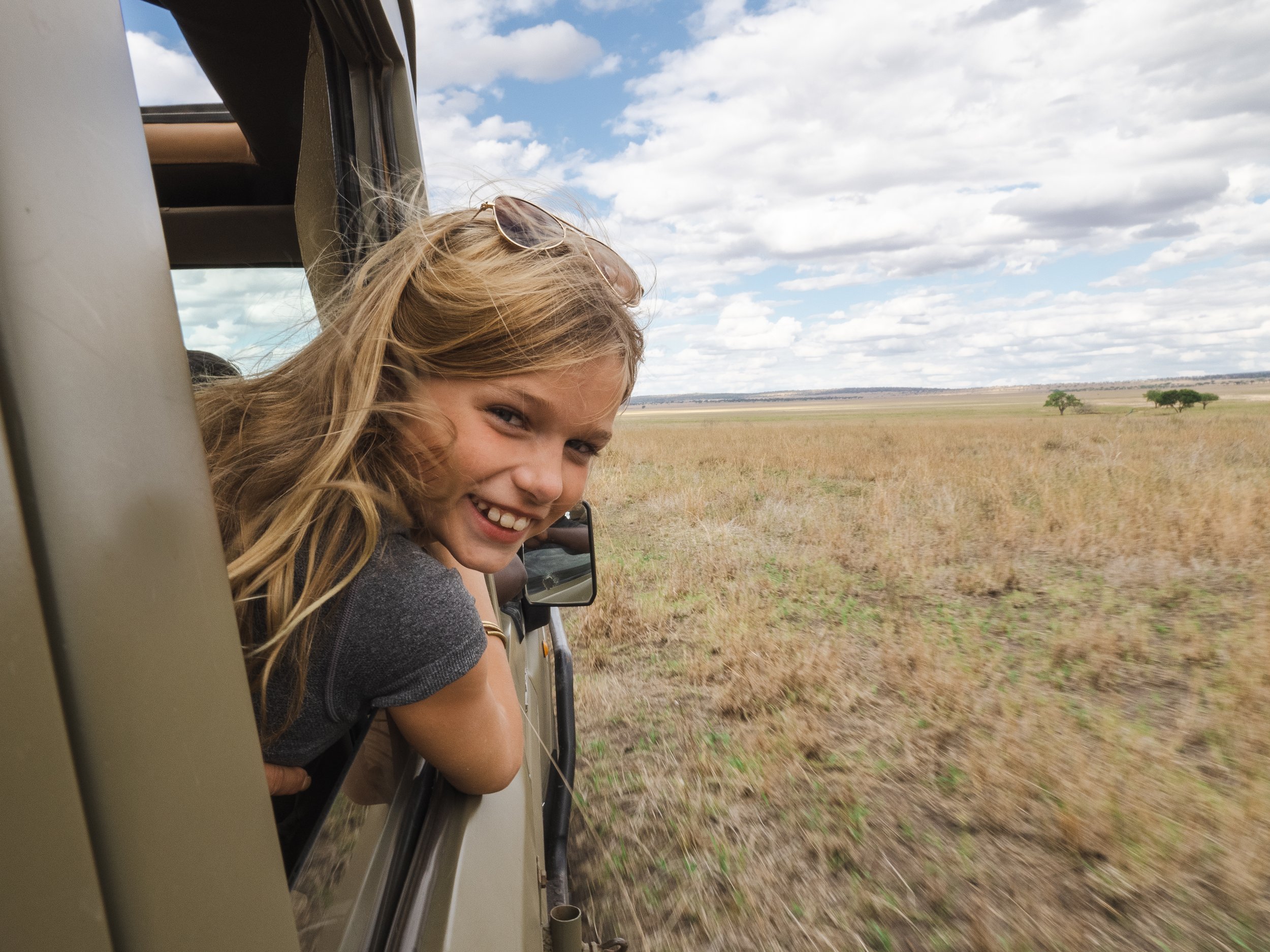



Your itinerary at a glance*
*always subject to change based on weather and other circumstances
-
You’ll schedule your flight to arrive on Nov 19 and that often means leaving the U.S. on Nov 18th or even the 17th.
The best airline to fly, in our opinion, is Qatar Airways.
Delta/KLM/Air France (they’re all code shares with KLM) is our second choice.
We’ll give you more specifics on flights after you register.
-
Because of the time change, most flights arrive in Tanzania at night (5pm, 8pm, or after midnight).
Our amazing team will pick you up at the airport and transport you to your first hotel.
This first hotel is an oasis outside of the city. The grounds are covered in rich vegetation and there are plants and flowers, everywhere. It’s stunning and more beautiful than most hotels in the U.S.
They have wifi and a restaurant but you’ll likely go straight to sleep.
If you need to arrive any earlier than this, the cost per night is around $250/person.
Lunches and dinners are around $20/person.
-
In the morning after breakfast, we’ll transfer to the Serengeti.
When we arrive, we’ll check in, freshen up, and rest.
You’ll be amazed how many modern comforts they can squeeze into your tent — king beds with fine linens, fully-enclosed, private toilets, a shower… even double vanity sinks with the most amazing views.
This camp is used by other tours who charge $13,000 and up (per person) for their safaris.
You’ll also be surprised by how divine the meals are when prepared in such a small space!
At 4pm, just as the light starts to turn, we’ll head out for our first game drive and enjoy drinks under the evening stars.
-
Our guides are all born and raised in Tanzania. Not flown in from South Africa like some other companies.
They’re friendly, fun… and they’re excellent drivers and expert animal spotters.
They know the best roads for spotting big cats like lions and leopard and they’ll take us there.
These places are only known by locals and not often traveled by tourist groups so they’re GREAT for photography and the authentic experiences I’m always looking for on my tours.
Bonus: We always add this third day here to make sure we get the most from this area and in case it rains one of the other days.
You won’t feel rushed like a typical tourist tour. It also helps with jet lag to spread this first stop out. Especially when kids are in tow.
-
One of the unique things we’d like to be known for is incorporating the country’s wonderful culture into our trips.
In addition to wildlife, we took the time to find tribes who are willing to share with the kids, their traditional way of life.
By the time your kids are grown, there’s a chance these tribes will be gone completely.
Until then, it’s important to see what once was and still is today.
Maasai families (tribe 1) are currently being moved out of the crater. It’s a fight between the government, conservationists and the tribes themselves who have grown so vast in number that animals can no longer pass freely between the parks. If we can meet a Maasai family here, we will.If we can’t, you’ll definitely meet a Maasai man every night when he escorts you to your glamping “tent” in the bush. Maasai warriors are hired by all the camps to escort you safely to your room. This is not Disney World after all. The rustle in the grass is not a singing warthog.
Maasai men are trained from birth to be warriors and experts in animal behaviors. They are given the task of protecting their family’s goats, sheep and cows from age 4. You’ll be safe in their hands.
In the evening we’ll make our way to the Ngorongoro Conservation Area to get some rest and prepare for our descent into the crater the next morning.
-
Before dawn, we’ll descend onto the crater floor for a chance to see the nearly-extinct black rhino.
As a UNESCO World Heritage Site, the Ngorongoro Crater is known for its dense population of wild animals, making it one of the best spots in Tanzania for rhino sightings.This 10-mile wide volcano top with 2,000 feet high walls is one of the most spectacular places imaginable.
Commonly referred to as the 8th wonder of the world, it’s a natural amphitheater for the circle of life.The short grass plains here are rich in nutritious grasses, providing the herds with the best conditions to eat and raise their young — which is why it’s so densely populated.
The game viewing here is among the very best Africa has to offer, and the light feels like you’re driving through a painting.In the late afternoon, after the park has closed, we’ll make our way out of the park and head deeper into the bush where the Hadzabe and Datoga tribes live.
-
We’ll start the day on this morning with a hunt with the Hadzabe tribe. You’ll see where they live, what they eat, how they communicate and try your hand at some archery (it’s surprisingly difficult).
Our photographs here are usually among my favorites and the tribes are incredibly generous with us.
From there, we’ll visit the Datogas, the blacksmiths. The Datogas make the metal arrowsheads for the Hadzabe and are among the best-dressed of all tribes.
We’ll overnight in the remote lodge again to save us from long drives and add much-needed rest.
-
In the morning, we’ll pack up and head for Tarangire — one of our favorite parks because it contains the greatest concentration of wildlife outside the Serengeti, yet it’s often overlooked by tourists.
Most known for its abundant population of elephants, it’s also unique for its burnt orange mud that makes the elephants and zebra turn red in color and its giant baobab trees (the trees used as a model for the Tree of Life at Disney’s Animal Kingdom).
We’ll game drive into the park (meaning: stop for animals we spot along the way) and then check into our luxury tent camp instead of a lodge.
On past trips we’ve always had to stay outside the park. But now, there’s this new camp that’s already in the park on the most beautiful side. Staying here means we’ll sleep in luxury AND be close to where we want to be before the sun comes up.
It’s a prime location with an amazing staff and awesome food.
You’ll unwind at night with drinks around a campfire, plush blankets across your lap if you get cold, your dinner exquisitely prepared, and your laundry taken and returned freshly pressed the next day.
-
Early in the morning, we’ll head out looking for lions and cheetahs who might be on the hunt. Every trip is different, but we usually see a lot.
Late November is right after calving season so babies are typically old enough to come out and play now.
Kids love watching the baby elephants trip over their trunks!!
It’s also not uncommon in this park to see 30-50 elephants at one time, hundreds of zebra and wildebeest and prides of 8-15 lions with their cubs.
Along the way you’ll meet with exotic birds, hyenas, giraffes, gazelles, and impalas, too.
In the late afternoon we’ll head back to camp and rest up after a gourmet lunch. Then do it all over again for sunset.
Life doesn’t get much better than this.
-
In the morning we’ll head out for our final game drive and drive back to Arusha.
You can schedule a flight home in the afternoon on this day or overnight and catch a flight out in the morning.
If you’d like to extend your stay and see more of Tanzania, you have a few options.
You can make your way to Zanzibar (an island on the East Coast of Africa, best known as the spice capital of the world)… or Climb Mount Kilimanjaro or Mt. Meru. You can also stay close to Arusha and tour a coffee plantation.
If you like any of these options, we can put you directly in touch with our guides for trip planning, pricing and special requests.
Note: Schedules like this are always subject to change. We sometimes run the trip in reverse order if we get reports that herds are in those areas or if flight prices change dramatically.
The people attracted to Focused Escapes
-
We typically take about 3-4 families on this tour!!
Kids are often between the ages of 8 and 15. They are well behaved and fun!
If your kid has anxiety about going, that’s ok. We’ve had two exceptionally anxious kids on previous tours and they did just fine after a day or two of easing in.
If your child has impulse control issues, however, this may not be the tour for you.
Kids must listen to their guides at all times - no hands out the windows, no standing when told not to stand, no talking when animals become stressed around the vehicles, no jumping, running, climbing unless we’re at camp and the guides say it’s ok in this area.
(Climbing in and out of vehicles and on certain trees, benches, etc is allowed and encouraged in some places. In Tanzania, kids are allowed to be kids.)
If your child is socially awkward, that’s ok, too. Just don’t expect them to all-of-a-sudden become social when they get there. The child you see at home is the same child you’re taking to Africa.
If you have concerns about your child’s behavior, please talk to us ahead of time.
-
We’ve been to more than 70 countries and Tanzania is one of our top picks for taking kids.
See also, Seoul, south Korea, Jordan and Morocco.
The Focused Escapes Advantage
Itinerary choices
-
We prioritize photogenic areas, ensuring travelers capture stunning pictures of their trip.
-
Unlike generic tours, we balance wildlife excitement with moments of cultural discovery, ensuring your trip is rich, immersive, and meaningful.
We also help with logistics, packing lists and itinerary adjustments.
More authentic and ethical travel
-
Our guides are trained in animal behavior AND photography so you come away with stunning photos even if you're not a pro.
This also helps us create insider experiences most tourists and travel agents don’t know about.
-
By partnering with local, ethical safari operators instead of big brands, we align with eco-conscious traveler values and those looking to support local people.
We use luxury accommodations in well-located areas so we don’t have to drive far or wait in a tourist line at every gate.




Authentic, luxury accommodations for a true, spectacular experience…

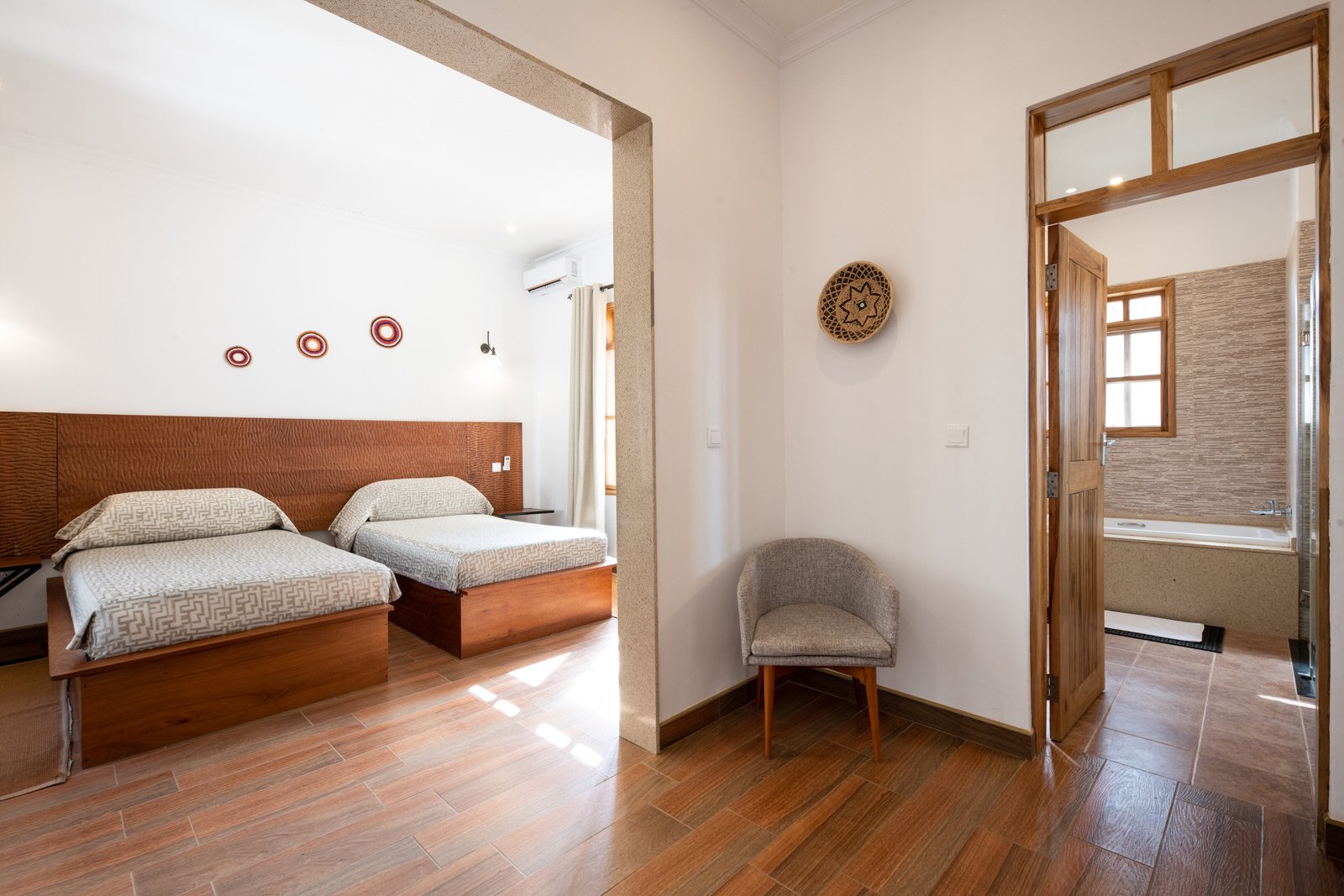
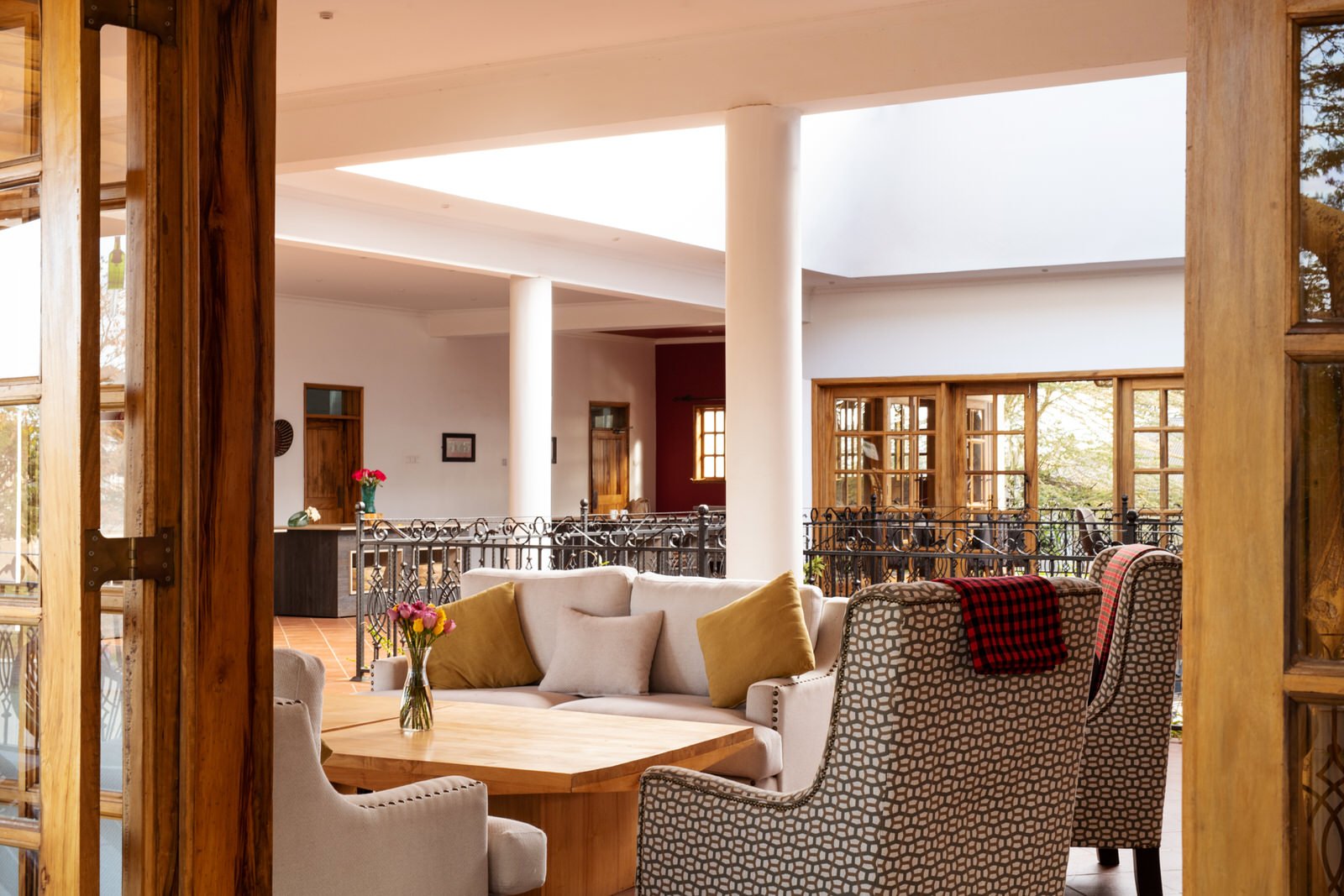
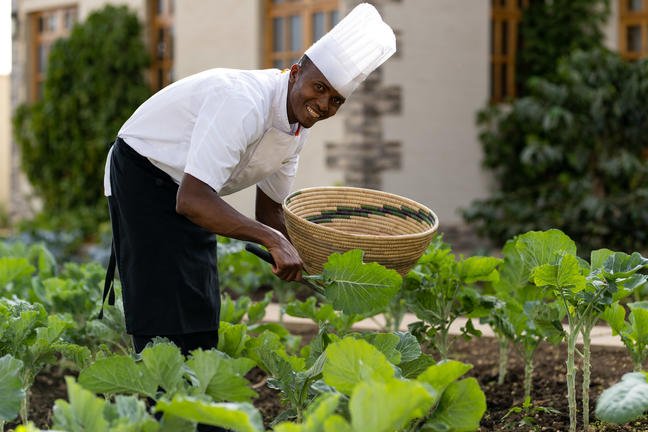
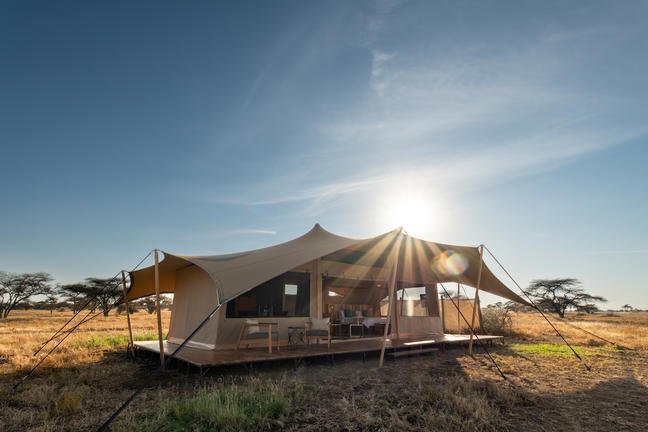
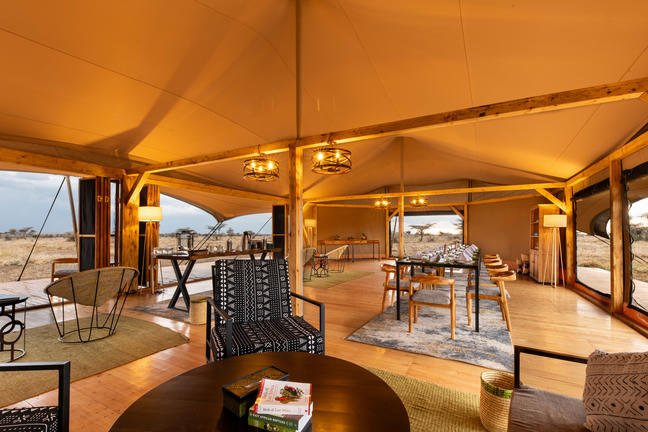
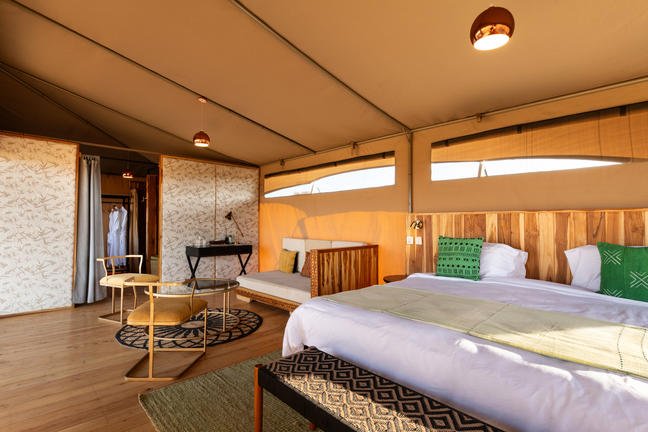
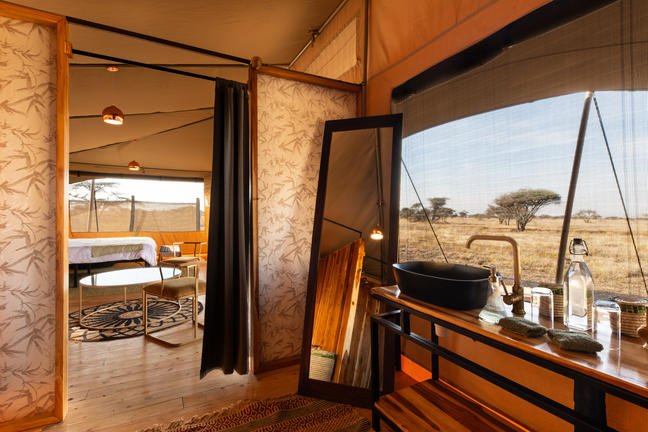

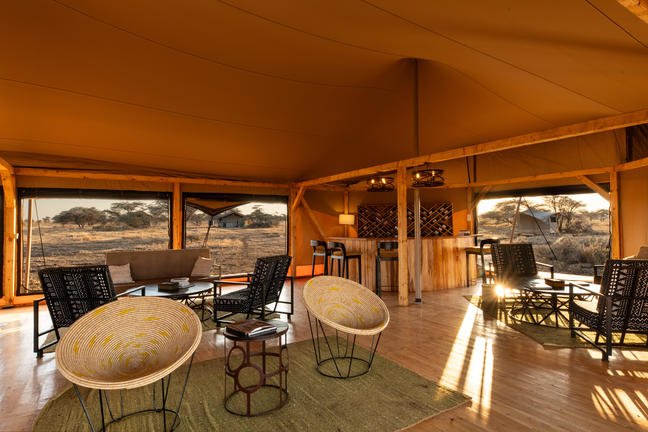
All rooms on this tour come with plush king beds (or two twins), a desk, multiple chairs and en suite, private bathrooms with hot-water showers.
Some rooms also have private outdoor showers in addition to indoor ones, where you can listen to the African birds in the trees as you wash the day’s dust away.
Sunsets are enjoyed with local beer and South African wine chilled at night — usually around a campfire or out in the bush!

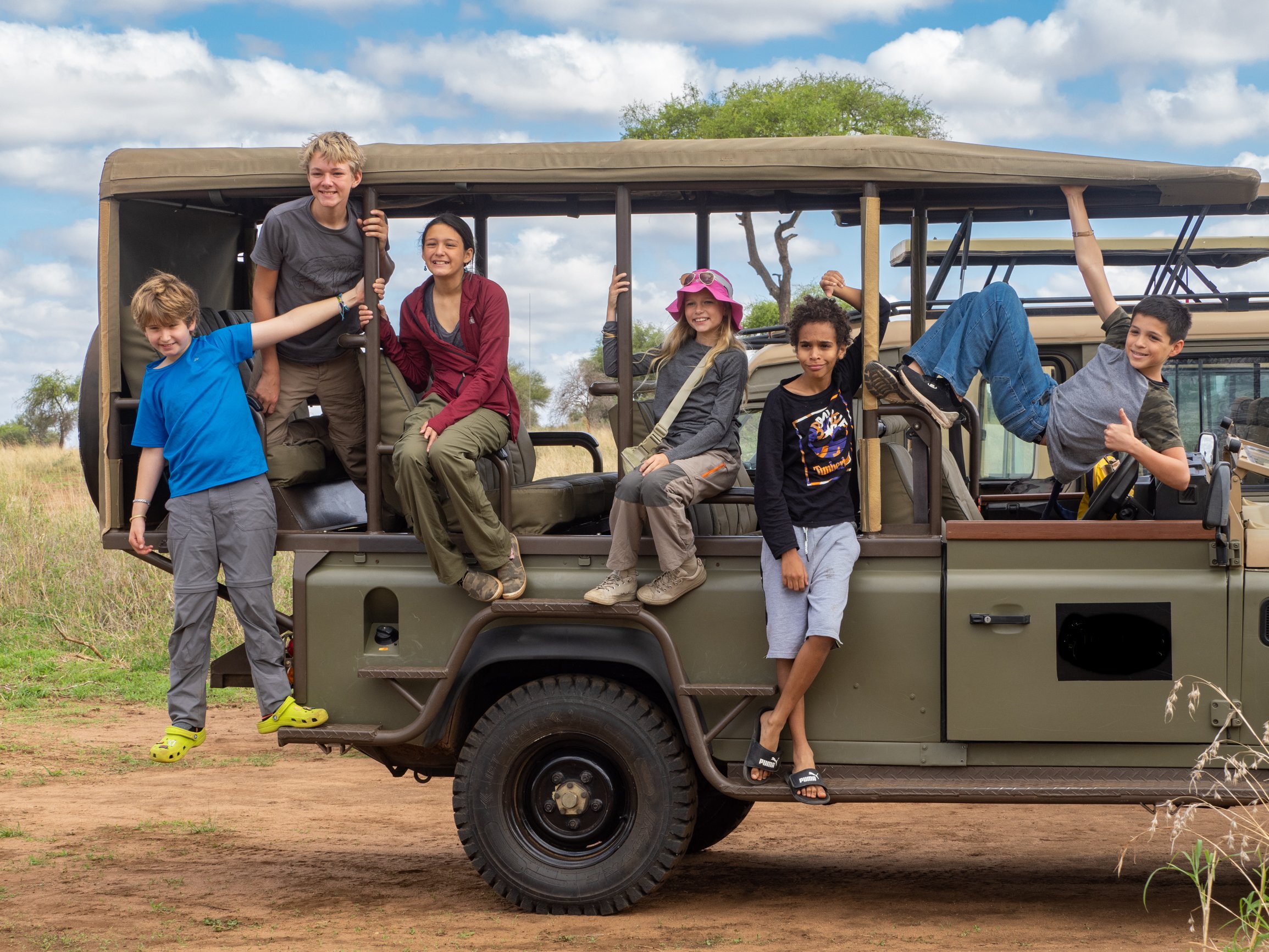
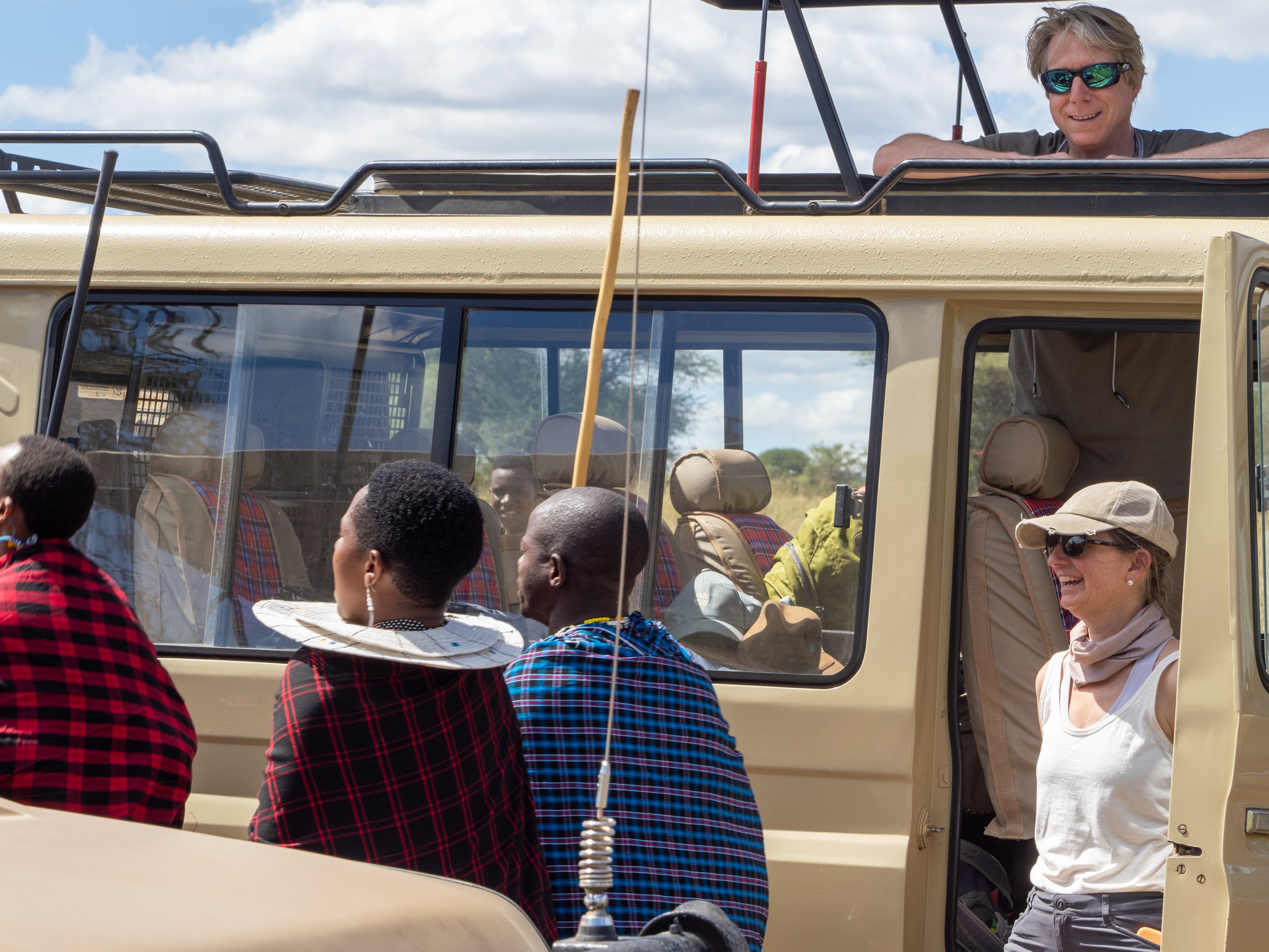
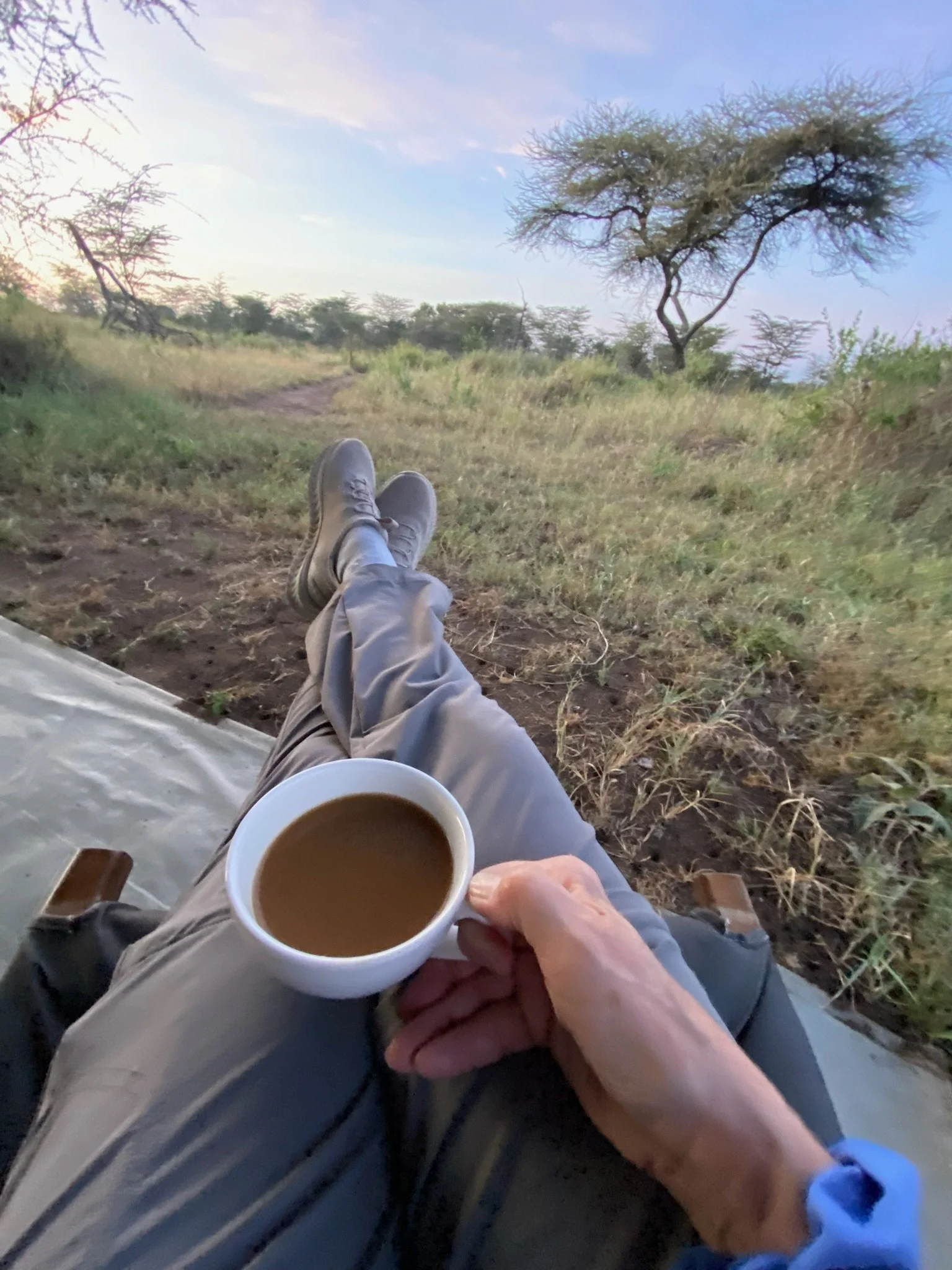





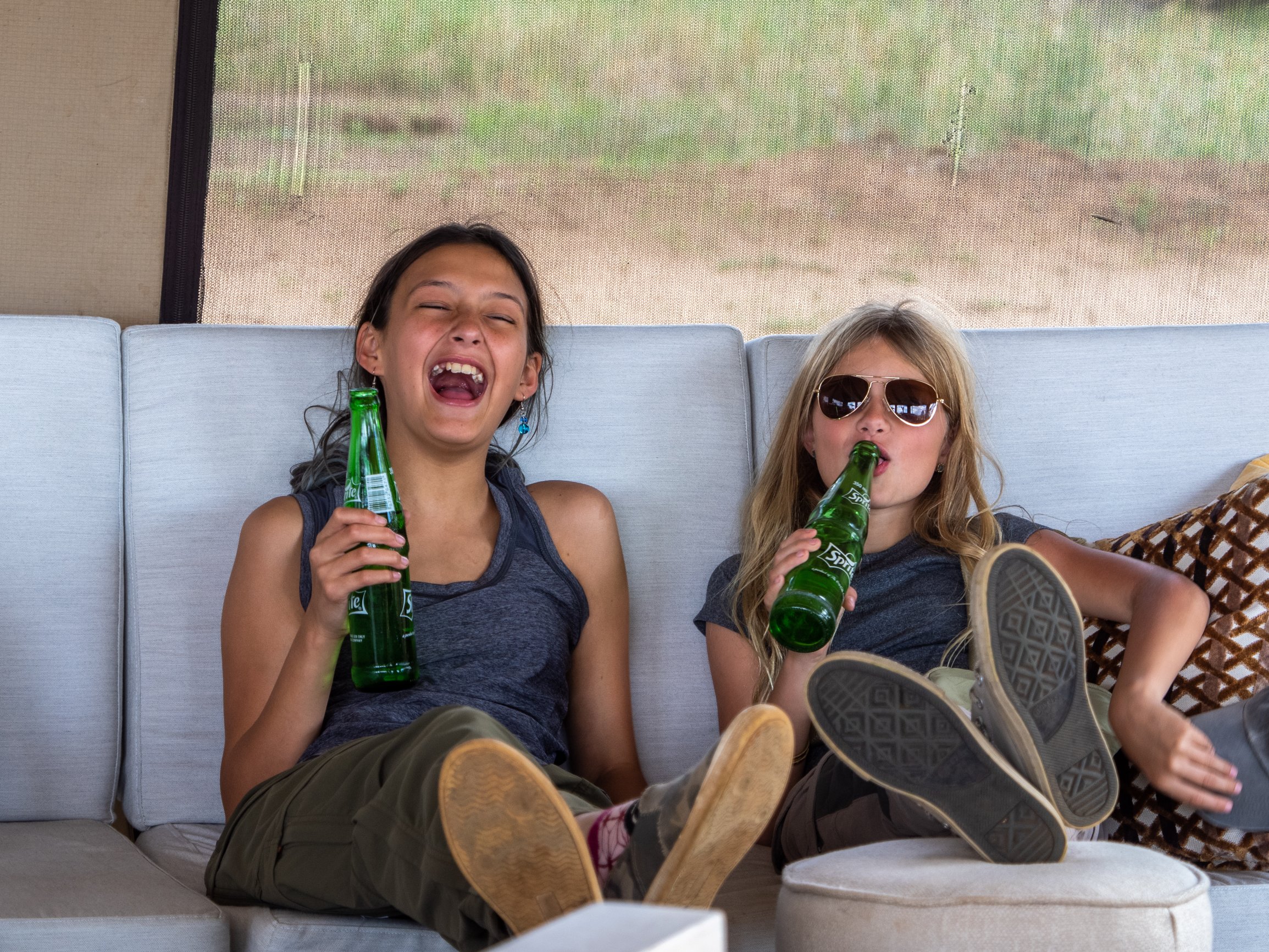
Learn More
-
Imagine taking a once-in-a-lifetime trip to Africa… only, instead of the average tourist tour, you’re on the adventure of a lifetime and you have inside connections.
Instead of waking up in a cold pitch-a-tent with dusty floors and a shared bathroom or a traditional hotel with their buffet breakfasts of stale bagels and bread, you’re woken just before sunrise in a luxury “tent” with king-size poster beds, dressers and fine linens. You have rugs and real furniture in your “tent” and private, en-suite bathrooms, too.
Your host makes you fresh cup of coffee and slips it inside your door so you can sip it while you get dressed. You wonder why it tastes so good before remembering that African coffee is exported all over the world. Throughout your stay, you’ll never have a bad cup.
It’s time for your first safari and a chance to see the Savannah while the nocturnal predators are still hunting for prey.
You climb inside your vehicle with a guide around 6am. There’s a light dew on the car and a chill in the air.
Your kids have decided they want to ride with the other kids today and you’re OK with that because you’re barely awake. They’re having the time of their life, too, and you’ve only had one cup of coffee.
Happily bouncing down worn, dirt roads, you feel exhilarated. Our Tanzania family tours are different!
A male elephant lumbers across your path just ahead. Some females push down a tree and begin tearing it apart for food. You didn’t know elephants ate trees or how loud it could be. The noise and experience is fascinating. The kids think it’s thrilling and you hear squeals of delight every time the baby elephants run into things and trip over their own trunk.
A short drive later your guide spots lions on a rock. They’re looking intently to the left and in the distance you see wildebeest. Your guide expertly positions your vehicle where he thinks the action will be. He’s right but it’s a miss. The lion chases but does not get the wildebeest. Your heart is pounding and you feel a strange mix of sadness and excitement. Did you really want to see that today?
It’s now time for breakfast under a 1,000 year old shade tree on a blanket spread out over the hood of your vehicle. Fresh fruit, homemade bread, granola, yogurt, hard cooked eggs and more delicious coffee.
Your friends are at home sitting behind a desk, organizing their closet or taking out the trash. You’re on the other side of the world on the vacation of a lifetime.
And you’re doing it unlike a typical tourist, too. In fact, the typical tourist is still waiting at the park gate to get in. But thanks to your insider connections, you woke up on the inside.
There really is no better way to experience Tanzania with kids.
-
Most other tours put you on a strict schedule and have you sleep in traditional hotels like you might if you were going to Disney World. They herd you through all the souvenir shops so they can get a commission on your purchases… they make you listen to boring lectures or go on boring walks because lectures and walks are cheaper than game drives so they add them where they can… and then they nickel and dime you at every turn — buy this, tip that — until you’ve paid twice as much as you budgeted.
But not here.
This is the exact trip I designed for my own family after leading groups of photographers to this area for more than seven years. It’s the trip you’d design yourself, if you had all the local contacts I do.
If you join one of our groups, our price includes all your gratuities (no hidden fees) as well as other kids in tow so your kids have friends to play with while you enjoy drinks by a fire.
We start our adventure in Tarangire National Park -- the land of the elephants -- where it’s not uncommon to see herds of 50-80 elephants together at once.
After three days on safari in Tarangire where it’s also common to see the rare black rhino, we’ll take a beautiful ride to the breath-taking Ngorongoro Crater — a UNESCO World Heritage Site - for a chance to drive into the crater itself (an erupted volcano).
Our lodge is situated just outside the crater itself with phenomenal views, our own private butler and easy access to local tribes. You’ll meet three different tribes on this tour — the Maasai, Datogas and Hadzabes and go on a hunt with the Hadzabes.
We’ll then end our trip in in the heart of the Serengeti – Tanzania’s most famous national park.
The differences between this tour and others are vast: Less crowds, less tourist-buffet meals, less driving, more safari game drives, more animal spotting, better views, more authentic tribes and overall, a better experience.
-
Moderate activity. Game drives during the day can be quit long, often sitting for several hours and bouncing around on bumpy roads. While this may not be considered strenuous activity, it can be uncomfortable and physically demanding on the body.
You must be able to climb in and out of the raised safari vehicles and able to walk around our camp accommodations, sometimes pretty far to your tent over uneven or rocky terrain.
-
The difference between traditional tourist safaris and our safaris are vast…
Traditional safaris take you out during the harshest of photo light (when the sun is directly overhead) all but ensuring you come home with poor-quality pictures.
They watch for cars to gather around an animal (a “sighting”) and then they get in line to see that animal. You spend a lot of time waiting for your turn.
You’re also crammed into vehicles with other strangers and sometimes, you don’t even get a window seat.
The safaris we can arrange are different…All Focused Escapes are designed by photographers so our itineraries don’t follow traditional tourist tours.
We know all the best roads for beautiful backgrounds and we work with local guides and operators to get you good deals and insider experiences.
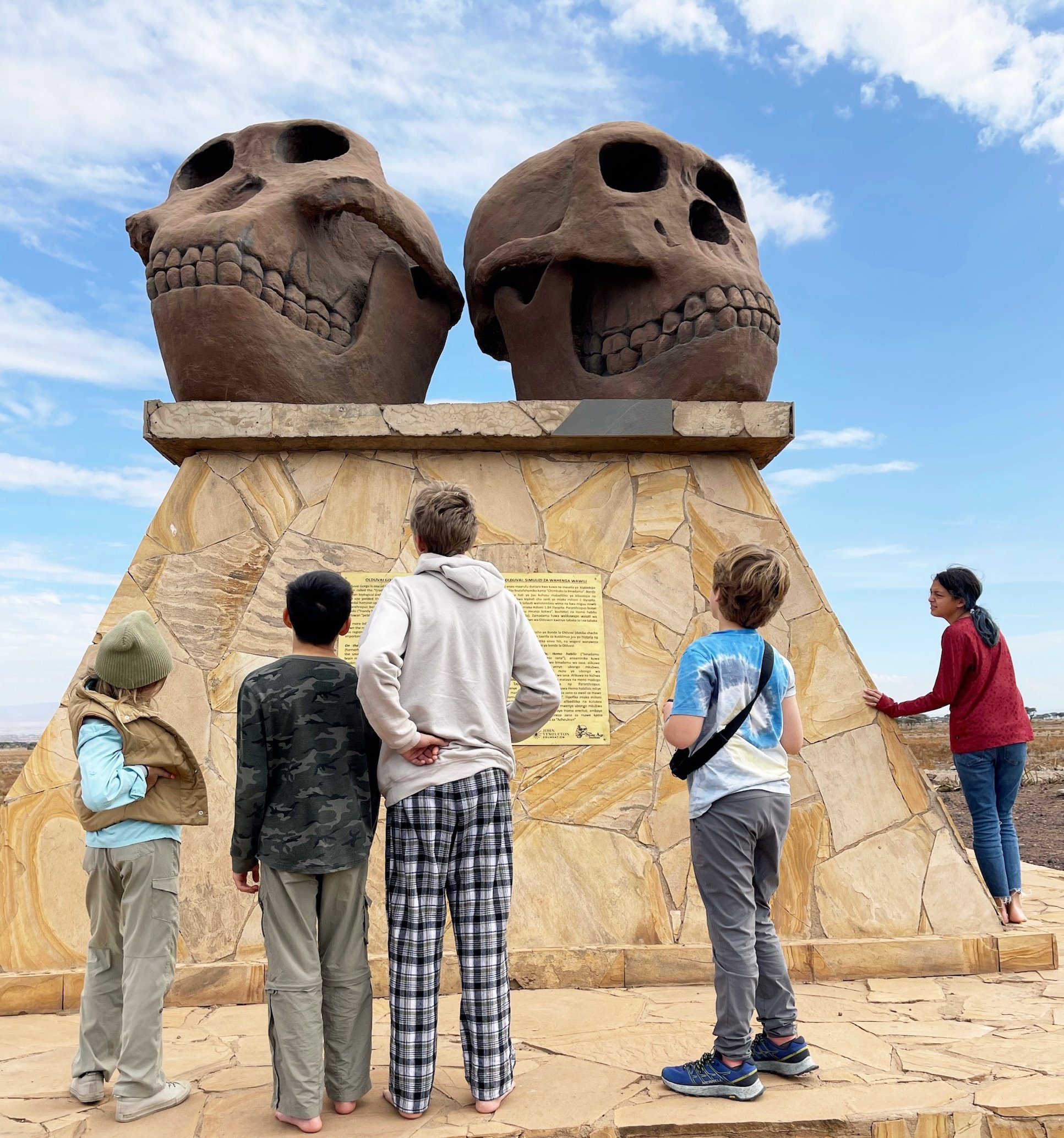





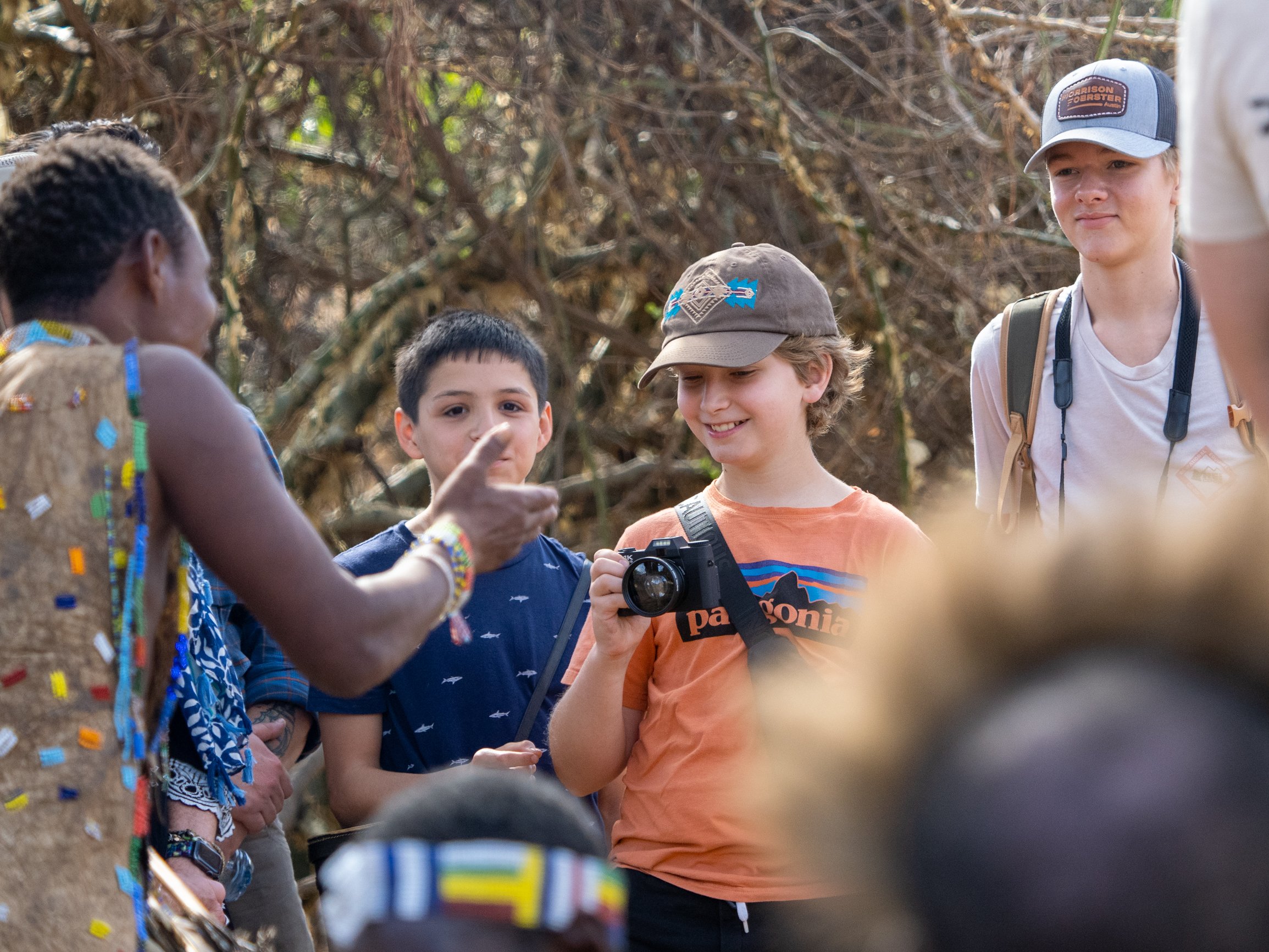
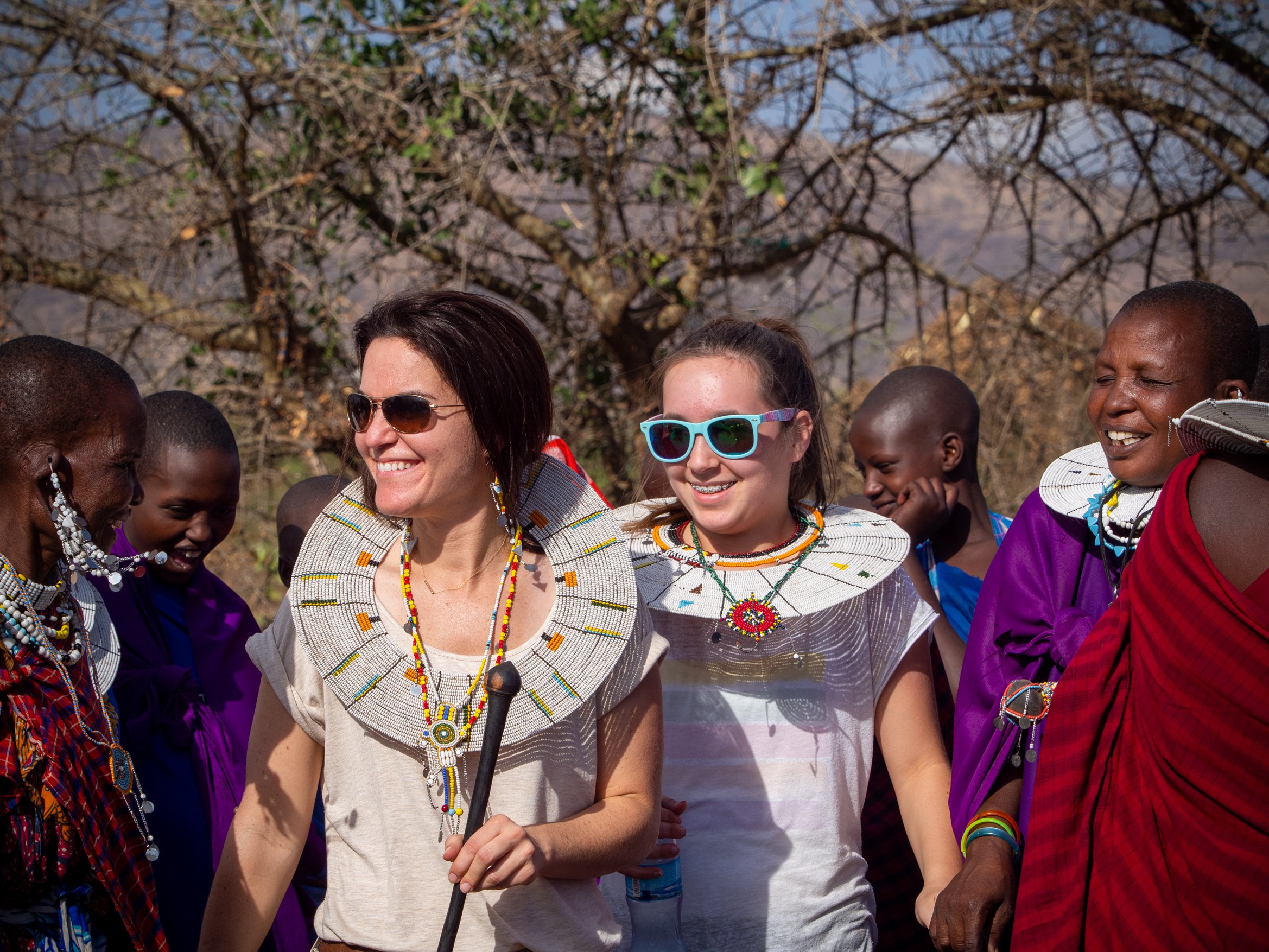
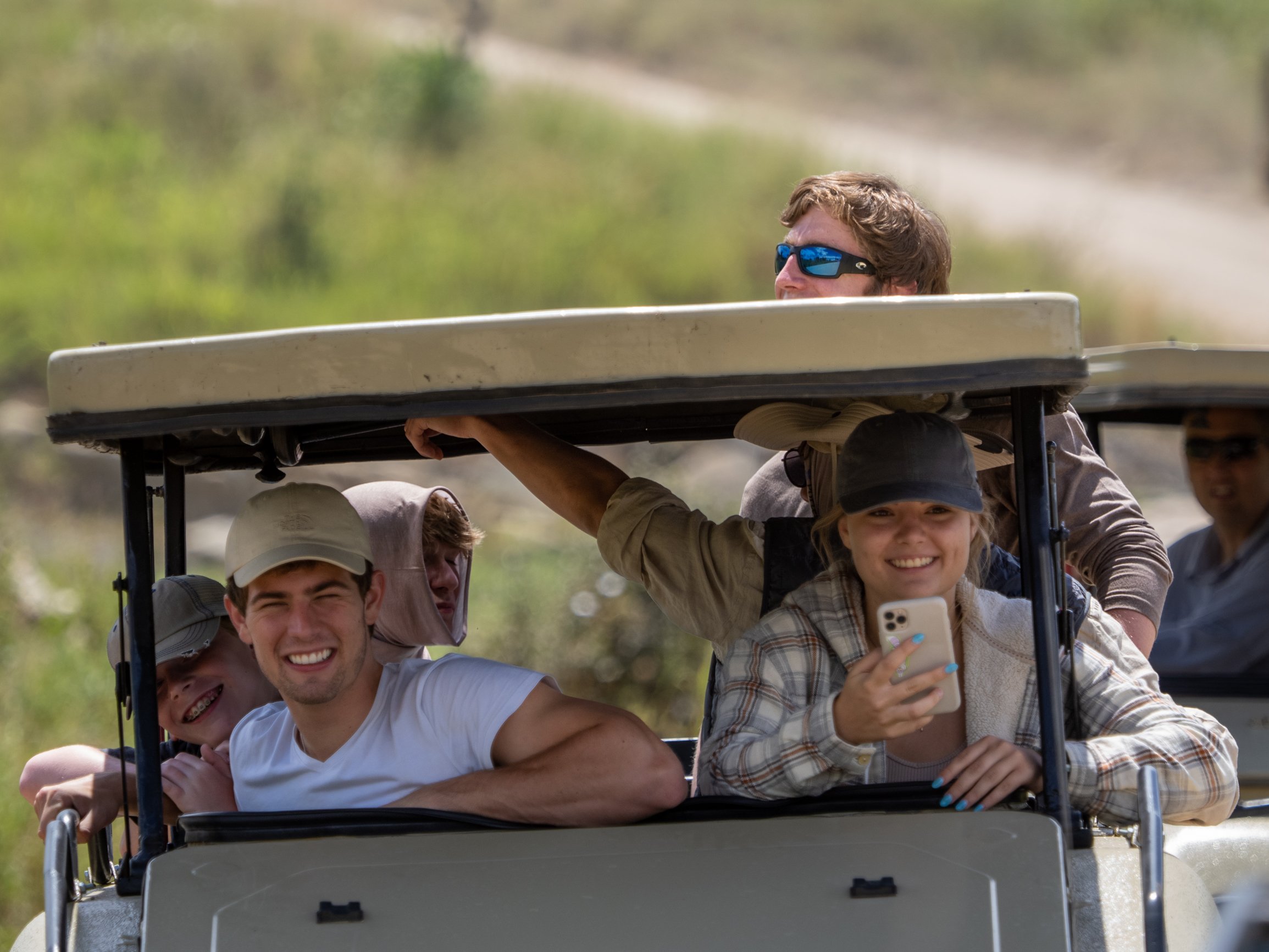
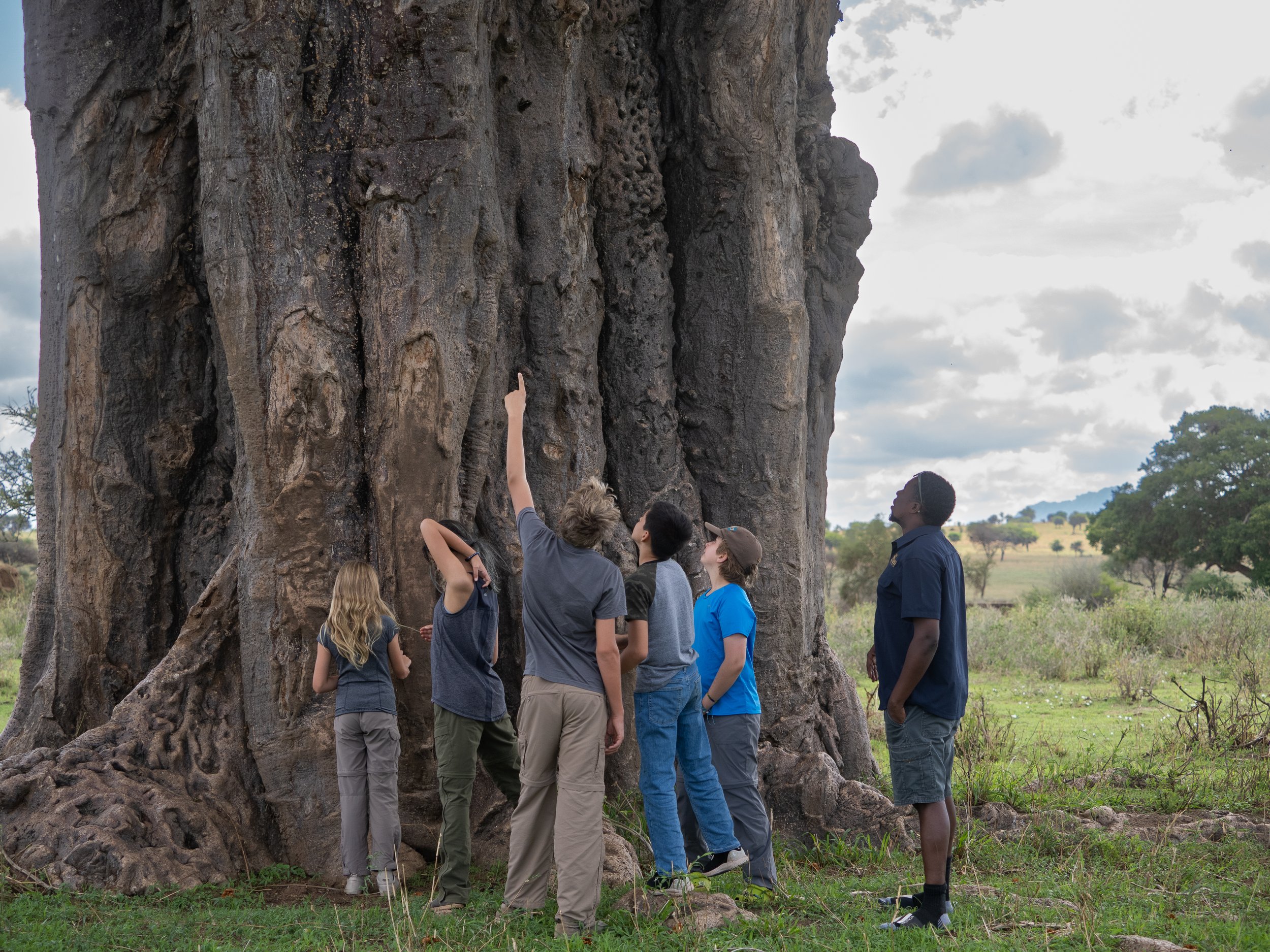
-
Compare this trip to any other you see online and notice:
Traditional safari packages have you stay in lodges instead of “glamping” camps.
This is because lodges are cheaper and can cater to large volumes of people. In this way, the larger companies can have more control over the services their customers receive.
But this means, hundreds of other people around you are getting the same experience you’re getting. You’ll experience traffic jams at your animal sightings… possibly a middle seat on some of the game drives… buffet meals at meal times… and no tribe/cultural experiences.
Your vehicles may also have wifi so your kids will be on their screens the whole time.
By contrast, if you price our tour, in small, luxury camps with private guides, private vehicles and tribe experiences, you’ll see it comes out to about $18,000/person.
Meanwhile, because we go straight to owners for our packages and we use the power of a group to negotiate prices, we can get the full price of $18,000/person down to less than $7,000/person and even less for kids.
We can be far more relaxed and still get in nearly twice the number of game drives as other companies, too.
Plus, our up-scale accommodations get us gourmet meals and other niceties we can’t get at cheaper locations.
Our tours offer: Less crowds, less tourist-buffet meals, less driving, more safari game drives, more animal spotting, better views, more authentic tribes and overall, a better experience. All because we’re small.
The full price of this tour won’t be announced until 2026 but if you budget approximately $7,000 per adult and $5,000 per kid, that should be enough.
-
Eight nights of luxury accommodation
Airport transfers
More safari game drives than any other company
All your ground transportation
Awesome guides who do all kinds of fun stuff with the kids
Donations to all the tribes we meet
3 amazing meals each day (except on arrival and departure)
All your national park fees
All your big gratuities if you’re traveling in one of our groups (this is HUGE!! and amounts to more than $300/per family member that you won’t have to bring with you)
All my experience planning what to pack, what to wear, where to go and how to get there
And so much more
-
Any camera or video gear you want to bring
Airfare to and from JRO airport (usually $800 - $1,500/person)
Travel insurance (I recommend buying a family plan through Allianz but please do your own research)
Covid test expenses (if neded)
You’ll need to apply online before the trip for a tourist visa ($100)
You may need vaccinations and malaria medication (some insurance carriers cover these with insurance, others don’t)
We don’t cover tips for porters (about $30 over the course of 9 days) because you typically want to hand them tips right away.
If you’re traveling on a private or custom tour, your quote will not likely include gratuities and since one of our staff isn’t going with you, you’ll need to bring that money with you.
Frequently Asked Questions:
WILL EVERYONE ON THE GROUP TRIP KNOW EACH OTHER?
No. But we advertise to our friends and family so there are often people on the trip that connect to us somehow by 1-2 degrees of separation. Also, strangers can make the best new friends.
IS MY 14-YEAR-OLD AN ADULT?
Yes. But sometimes we can still get you close to the kid price if your family puts three to a room (ie, if you are a family of three, five or six).
WHAT DO I NEED TO BRING?
Your passport and a smile. You’ll apply for a visa one month before your trip.
Once you register, we’ll send you a recommend packing list including suggestions on camera equipment if you’d like to capture images of landscapes and wildlife. A camera is not required. Smart phones are great cameras these days.
WILL YOU OFFER THIS OPPORTUNITY AGAIN?
Maybe. But prices in Tanzania typically go up every year.
CAN I BRING FRIENDS OR TELL FRIENDS ABOUT THIS EVENT?
Yes! You’re welcome to spread the word. But please only share it with your most interesting and friendly friends if it’s for a group trip.
WILL I BE EATEN BY LIONS?
No! Lion food walks on four legs. Just like we don’t try to eat things that don’t look like food (refrigerators, trash cans, bugs, bats, clothes) lions don’t go around taste-testing things that don’t look like food. Especially things that stand taller than they do and have two forward-facing eyes like a predator.
IS IT SAFE?
Is it safe where you live? We can’t eliminate all your risks when traveling. But we can mitigate as much as possible by using contacts we trust, staying in properties we know, and telling you to buy insurance should something unforeseen happen.
In all our years bringing groups to this area, we’ve only ever seen twisted ankles from jumping out of the truck, upset stomachs from the plane or malaria meds and a few people have shown up without their prescribed medicine so we have to run to a pharmacy.
Everything is a risk (including staying home and sending your child to school). It’s just a matter of perspective.
We guarantee: You’ll never find a better tour at any price.


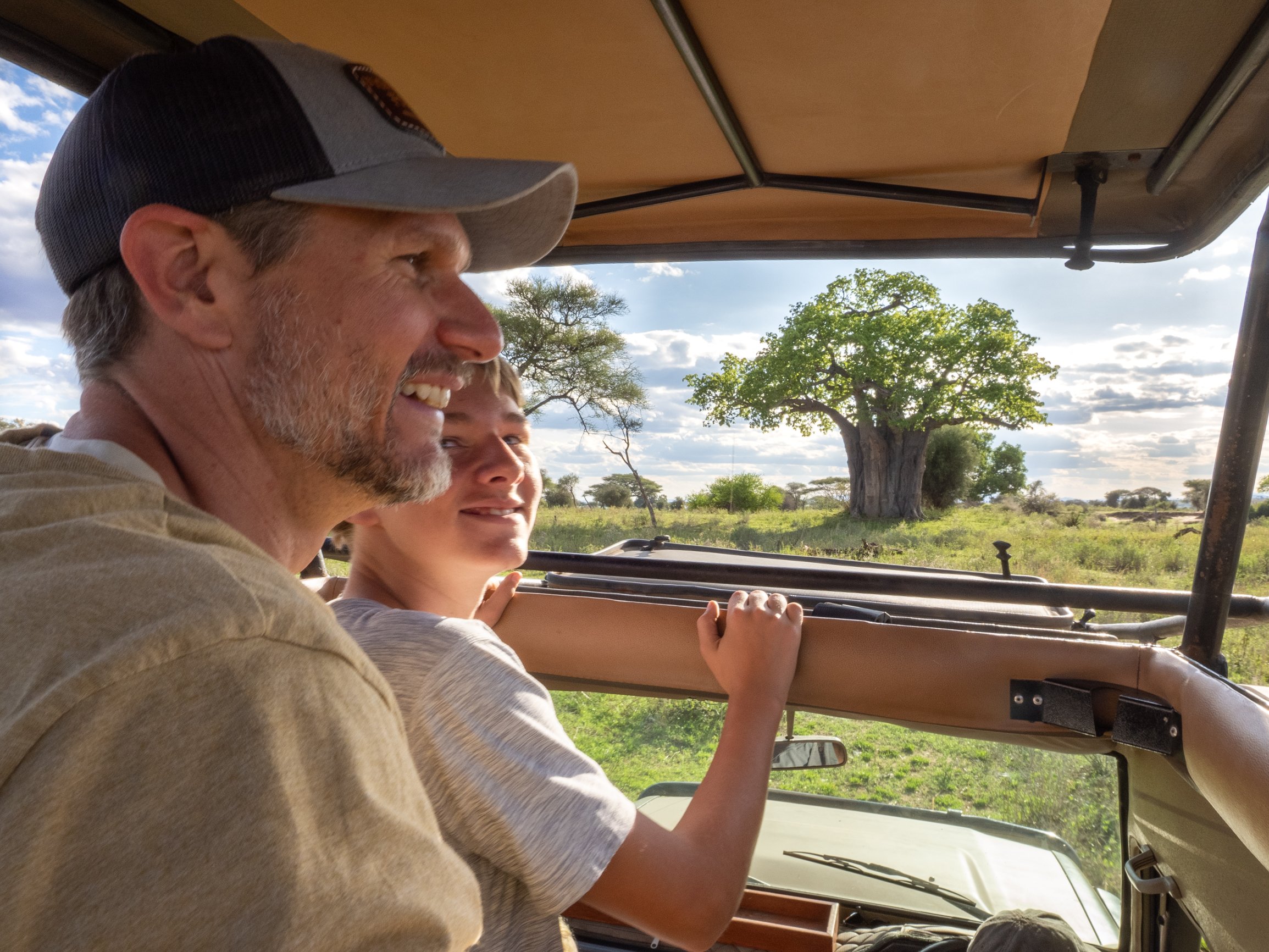

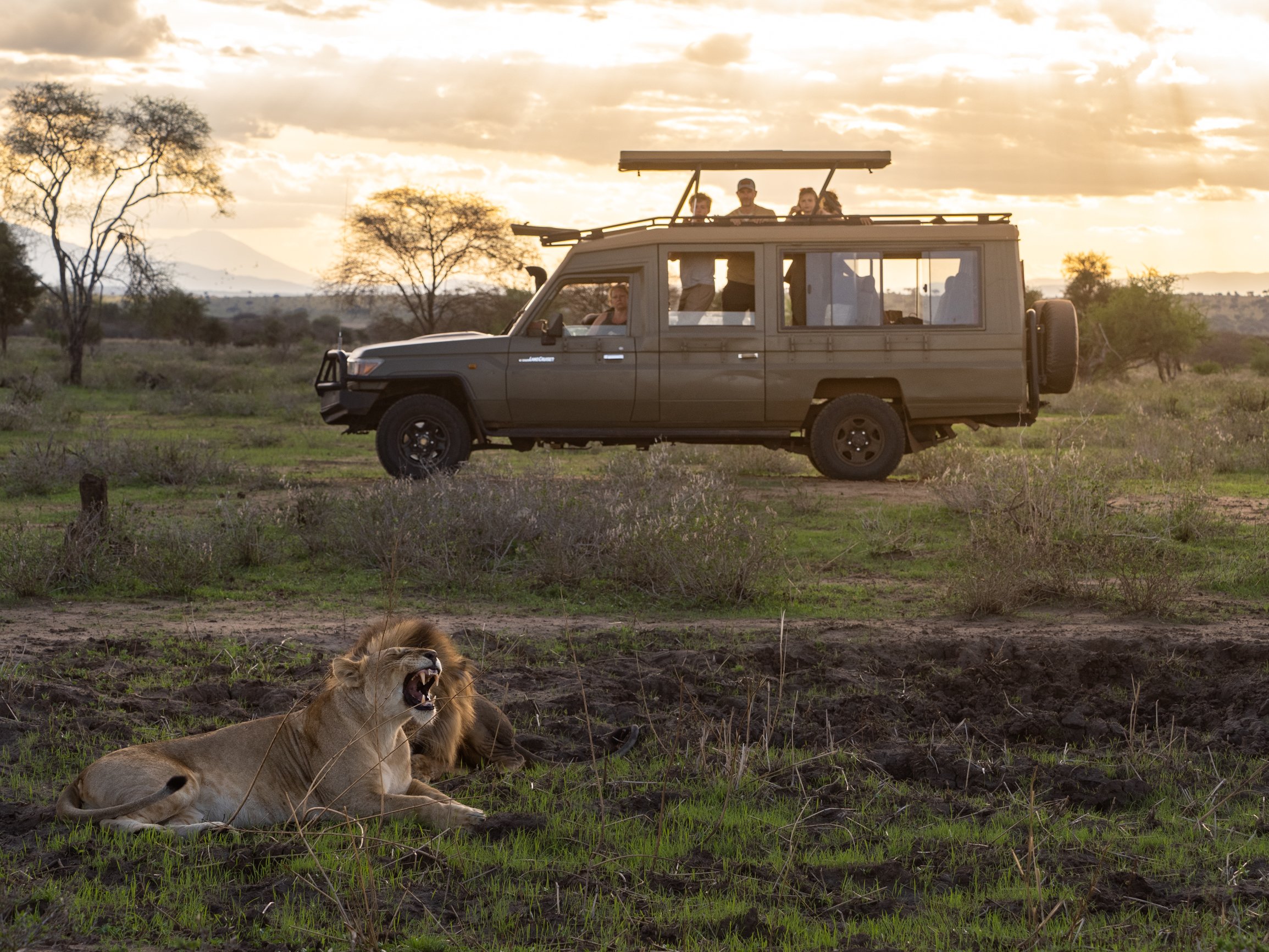
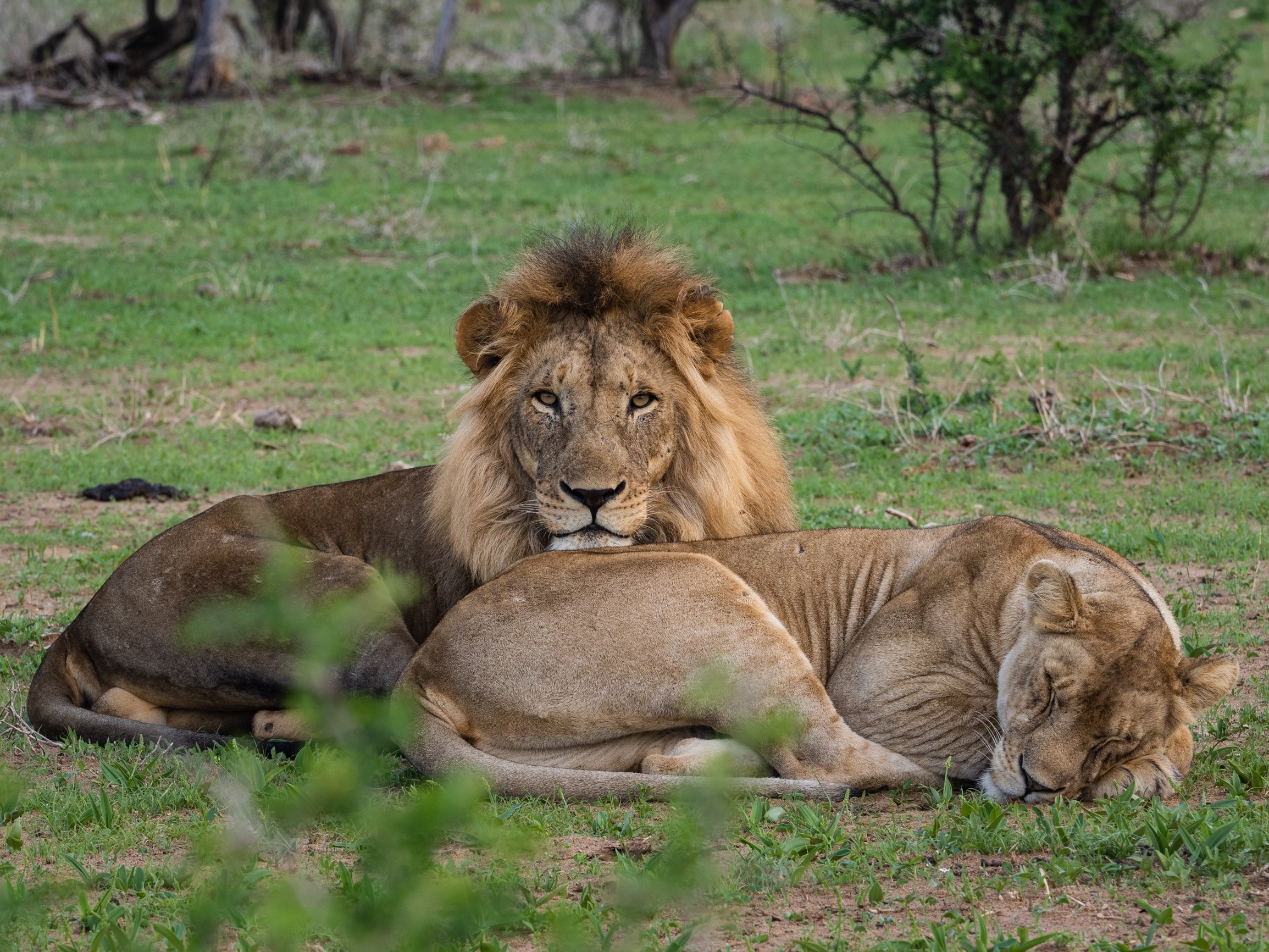
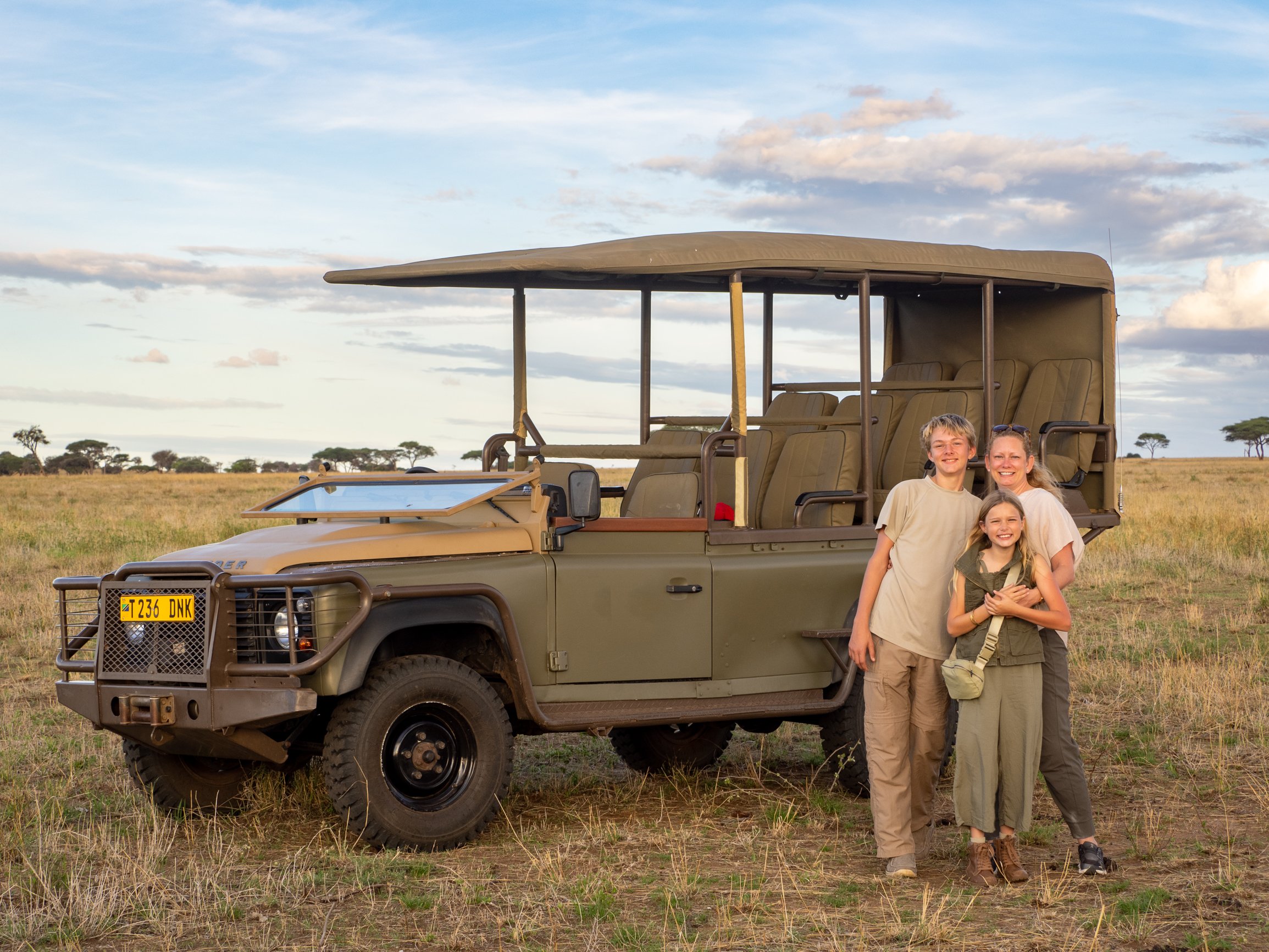
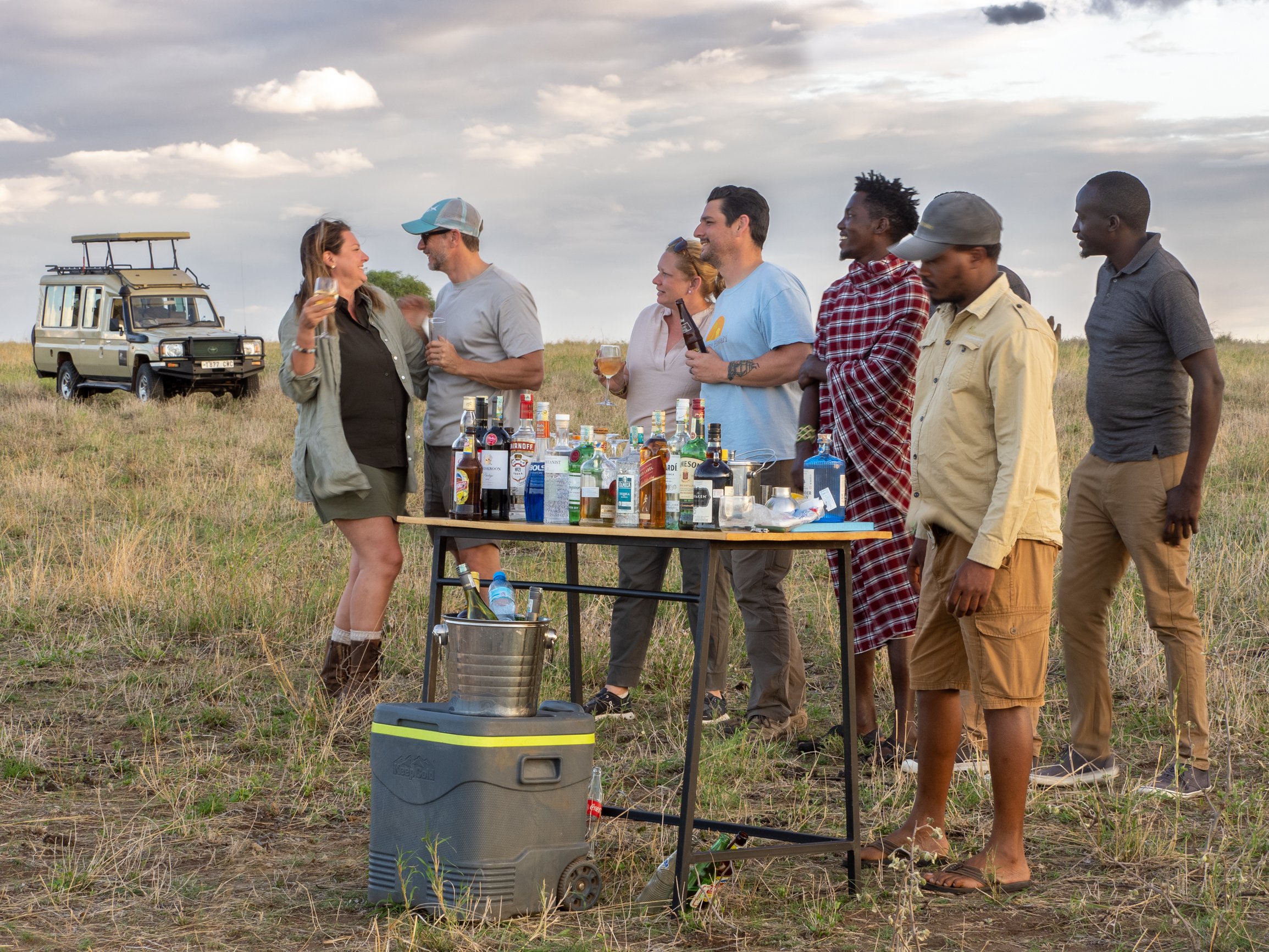
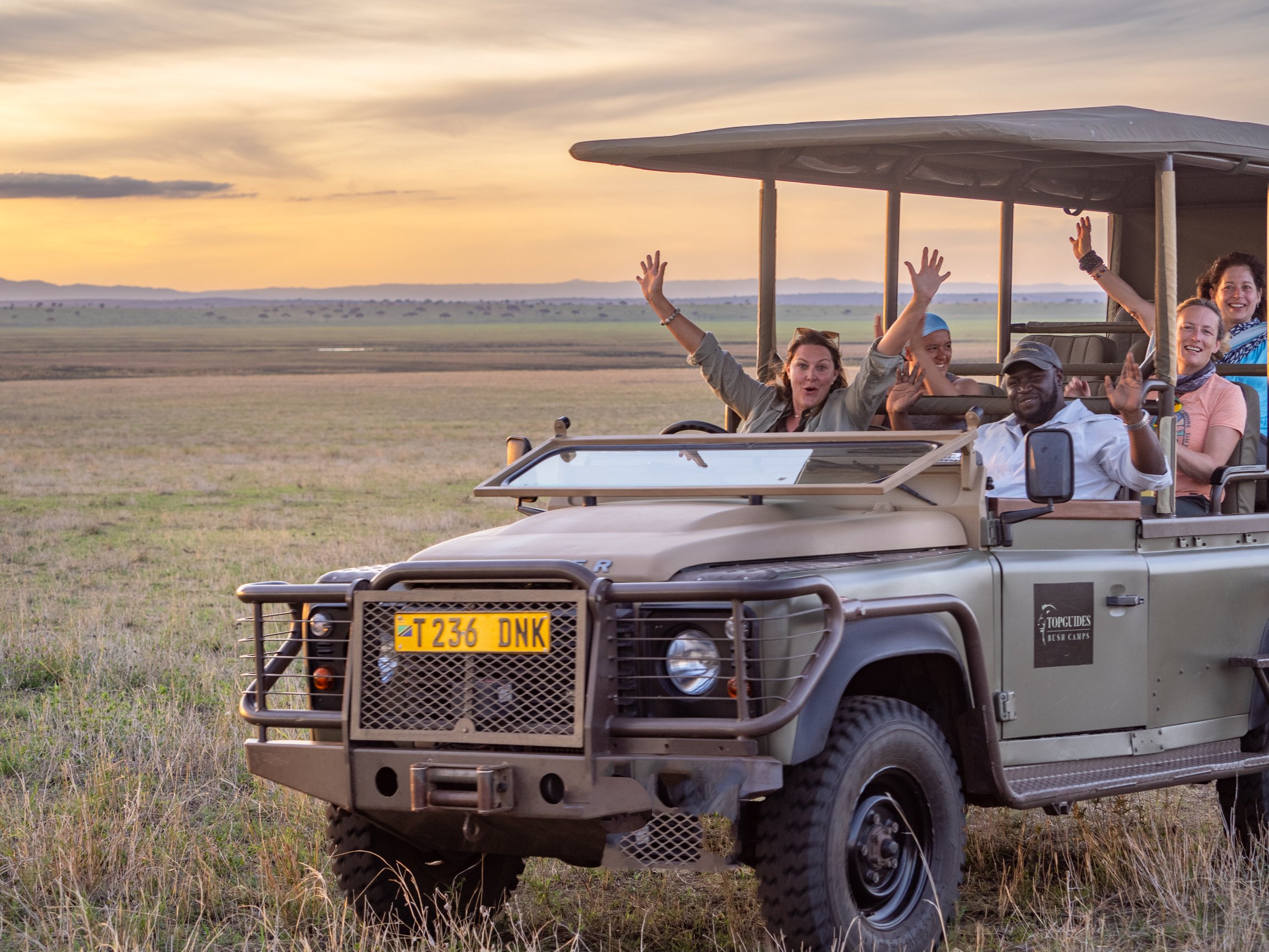

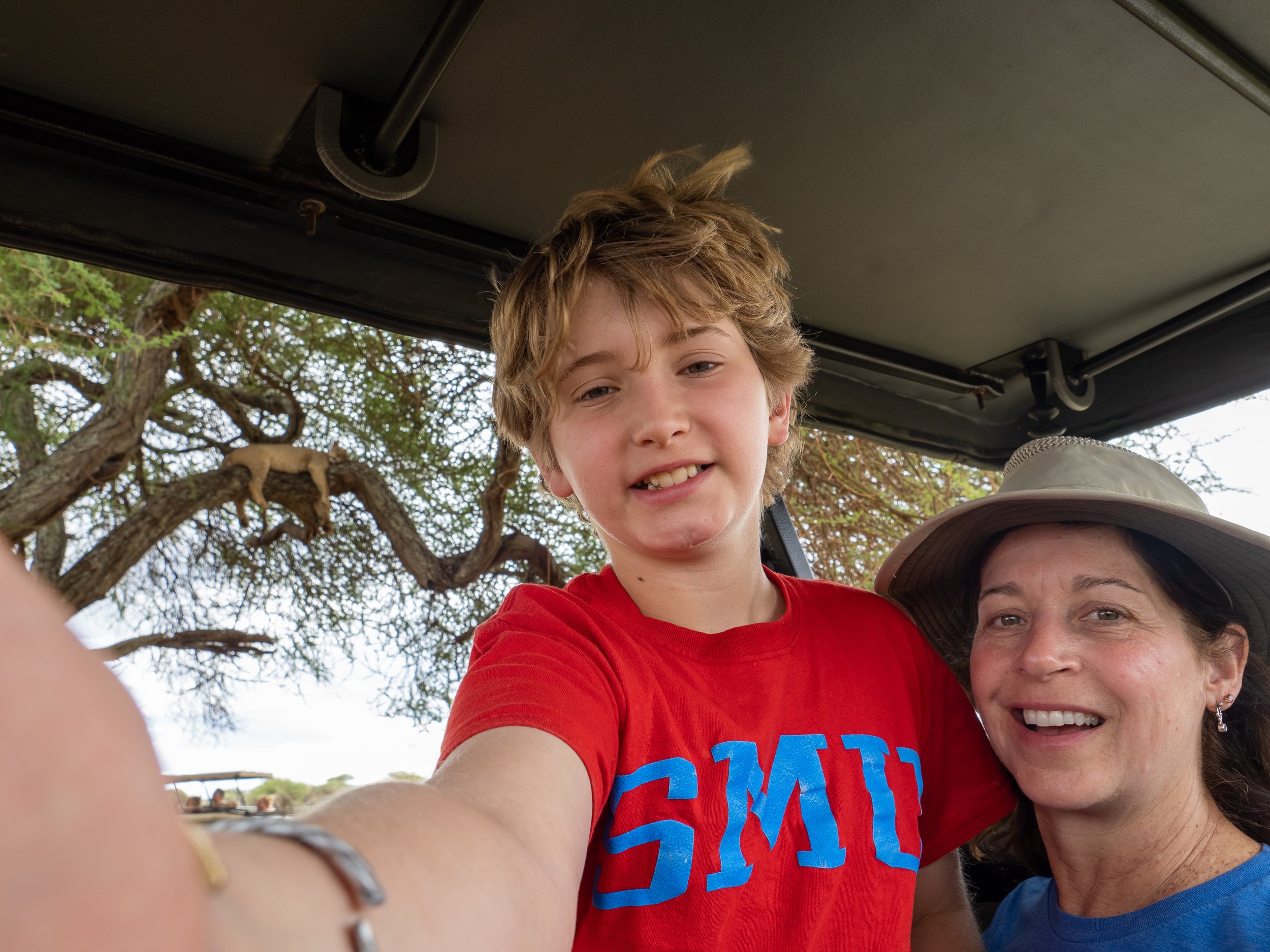
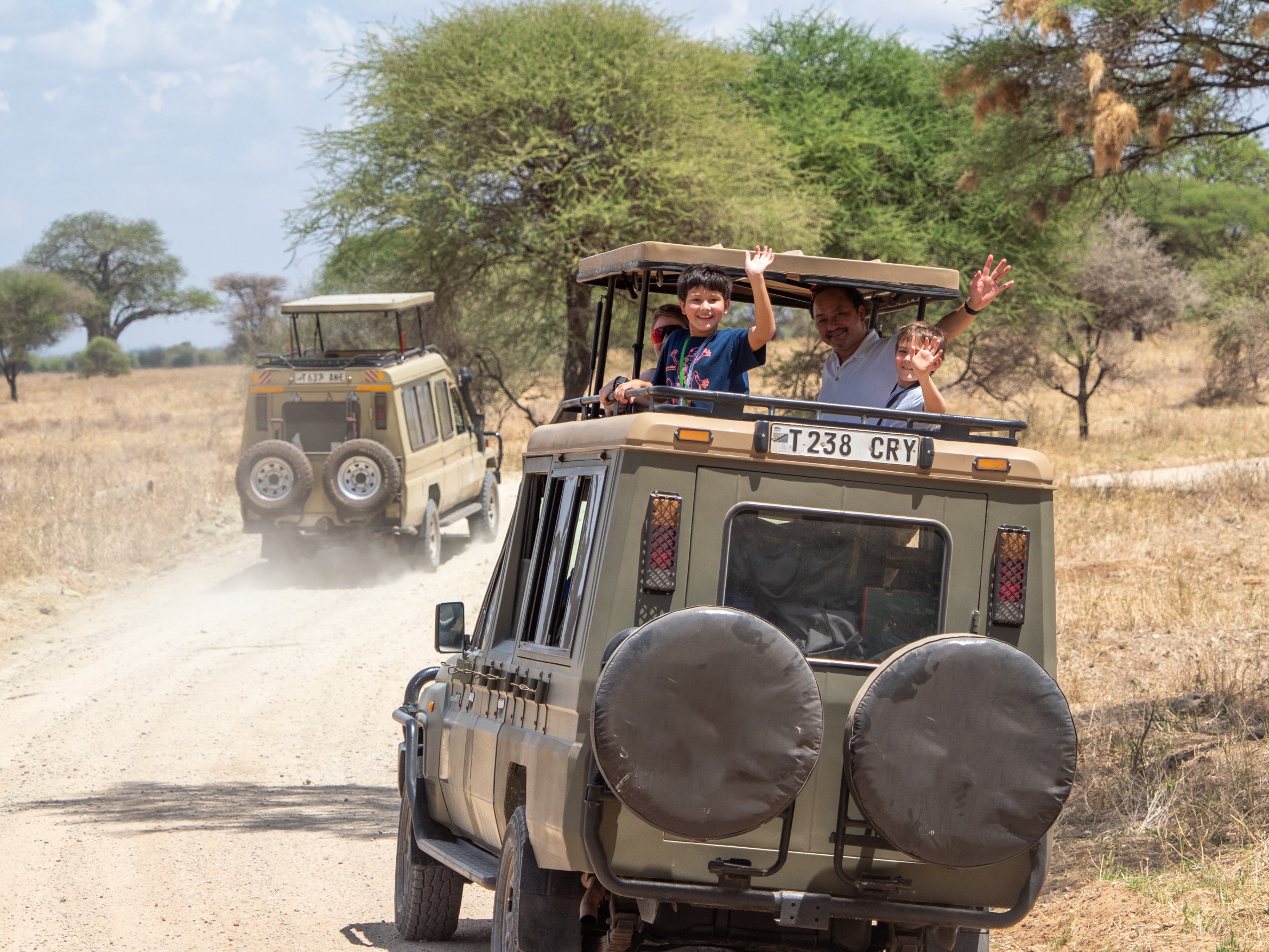
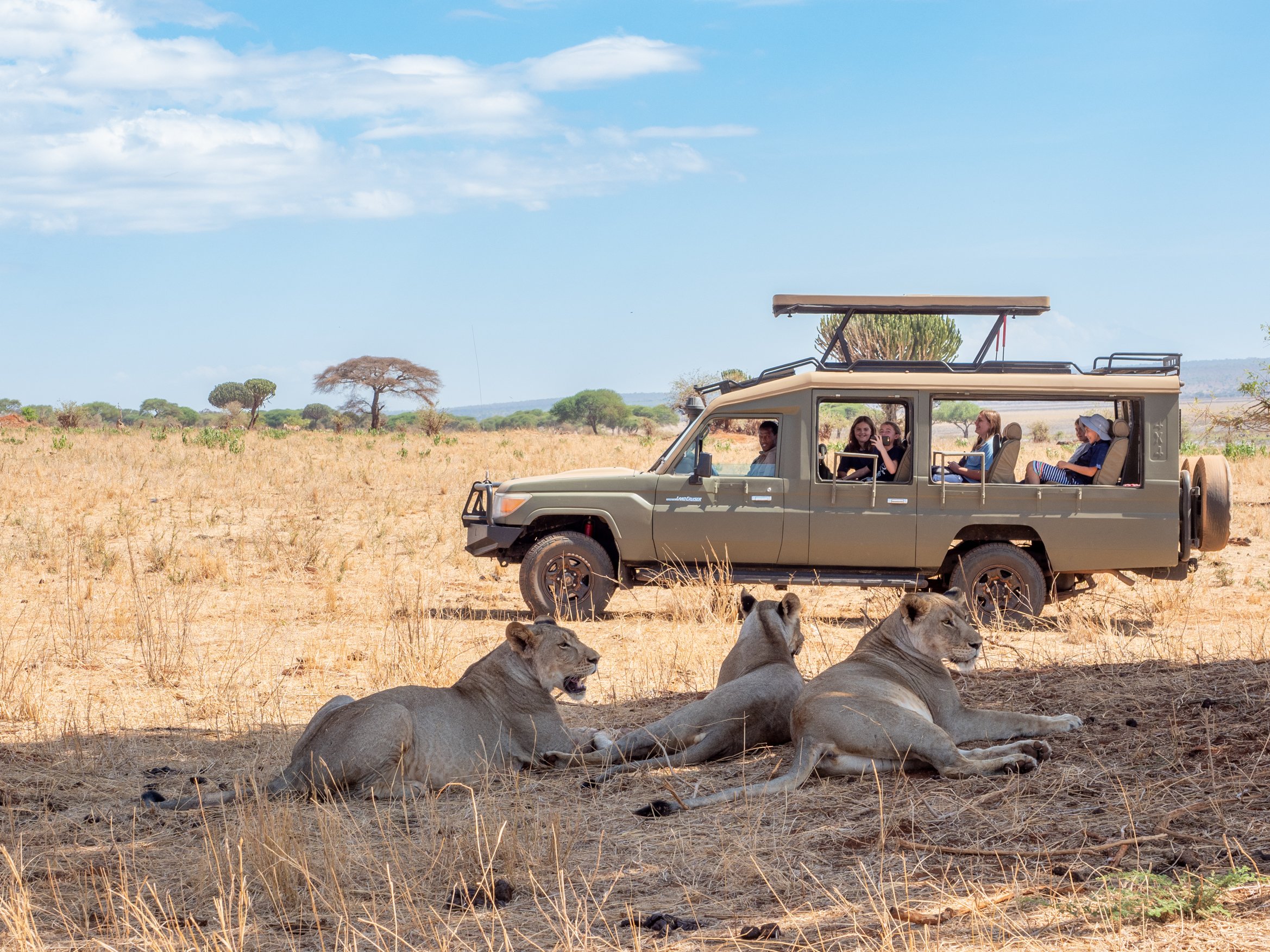
Want to make this a private trip?
Get Details Here


